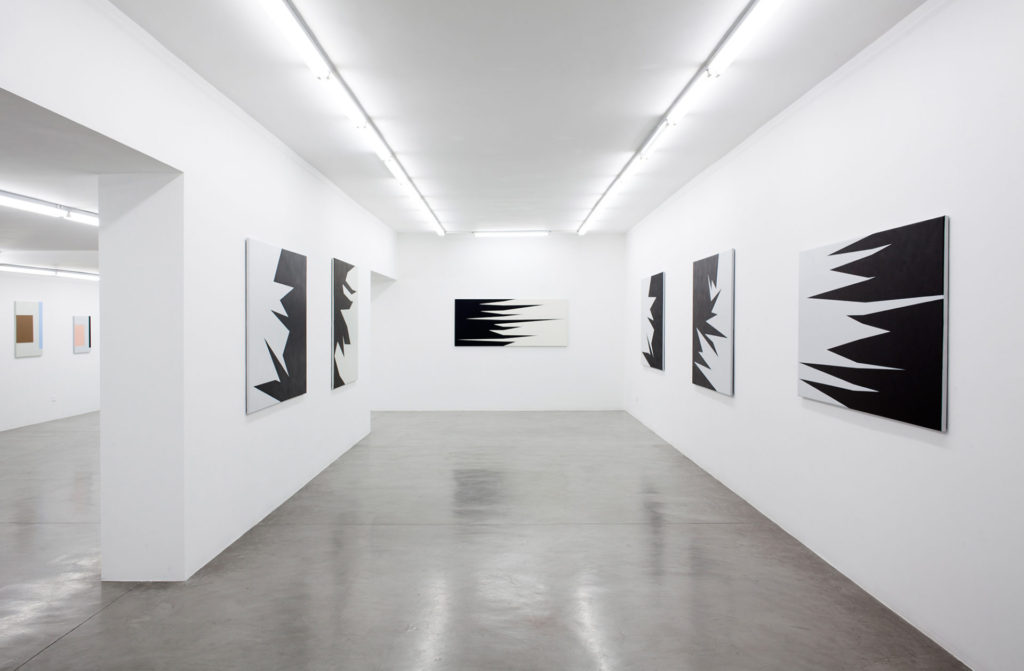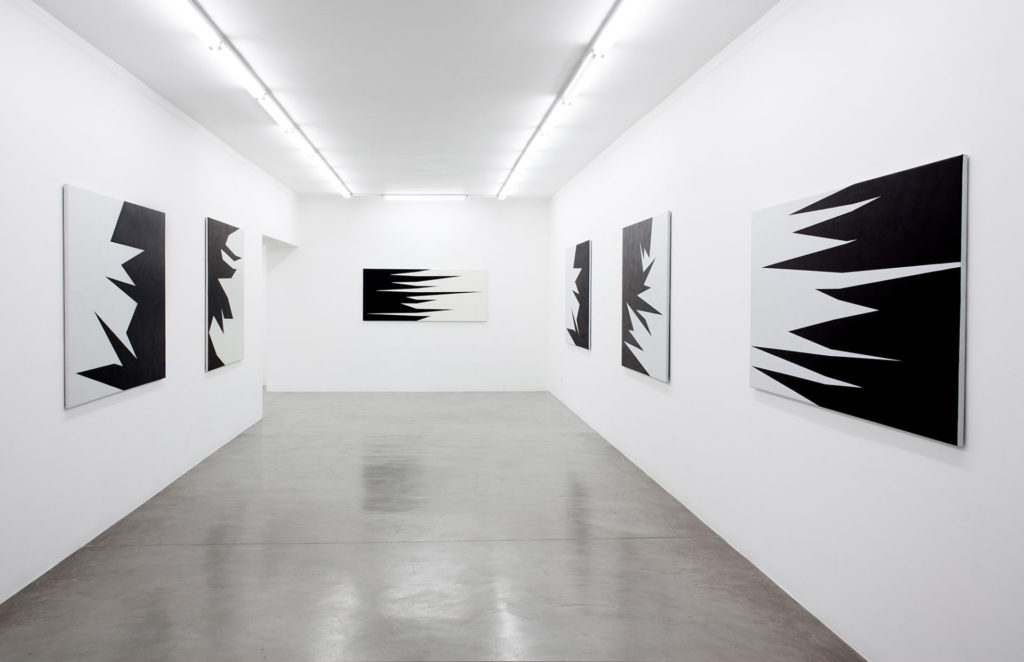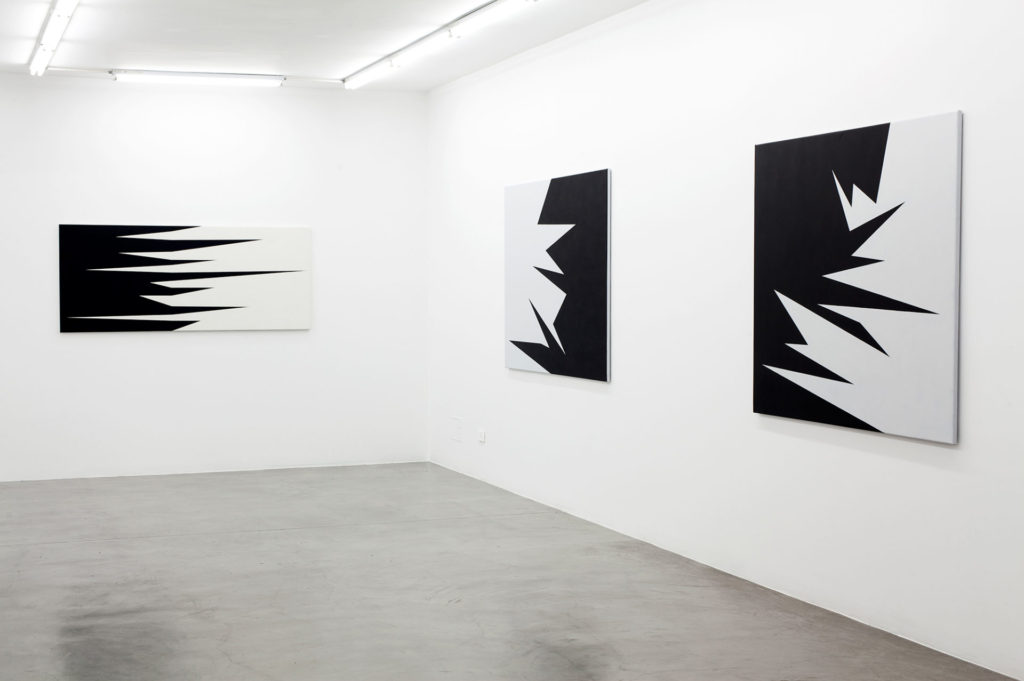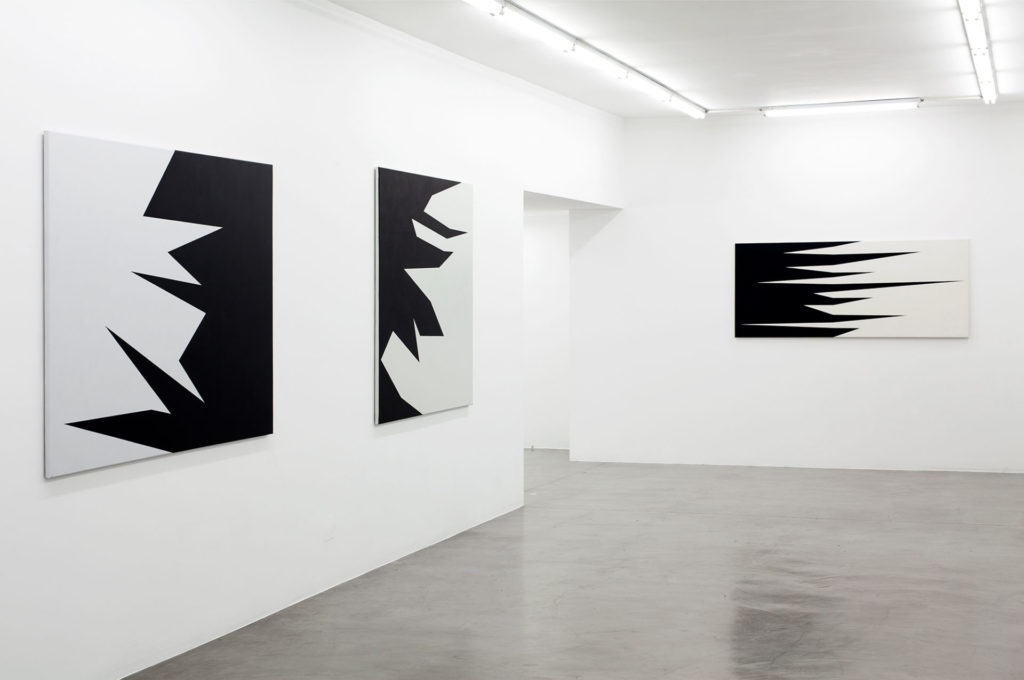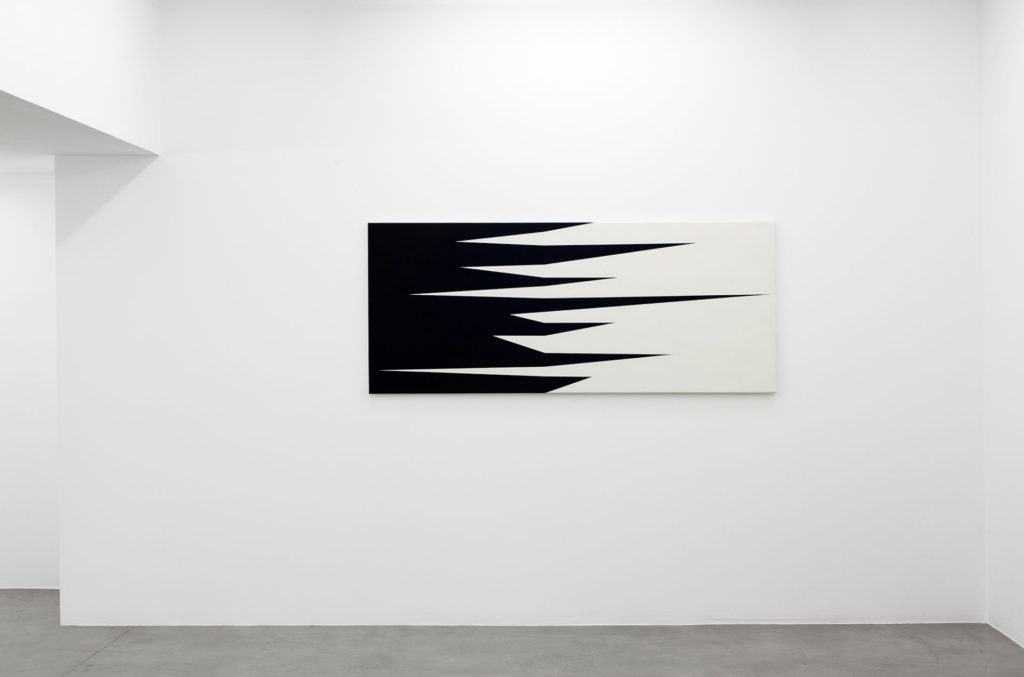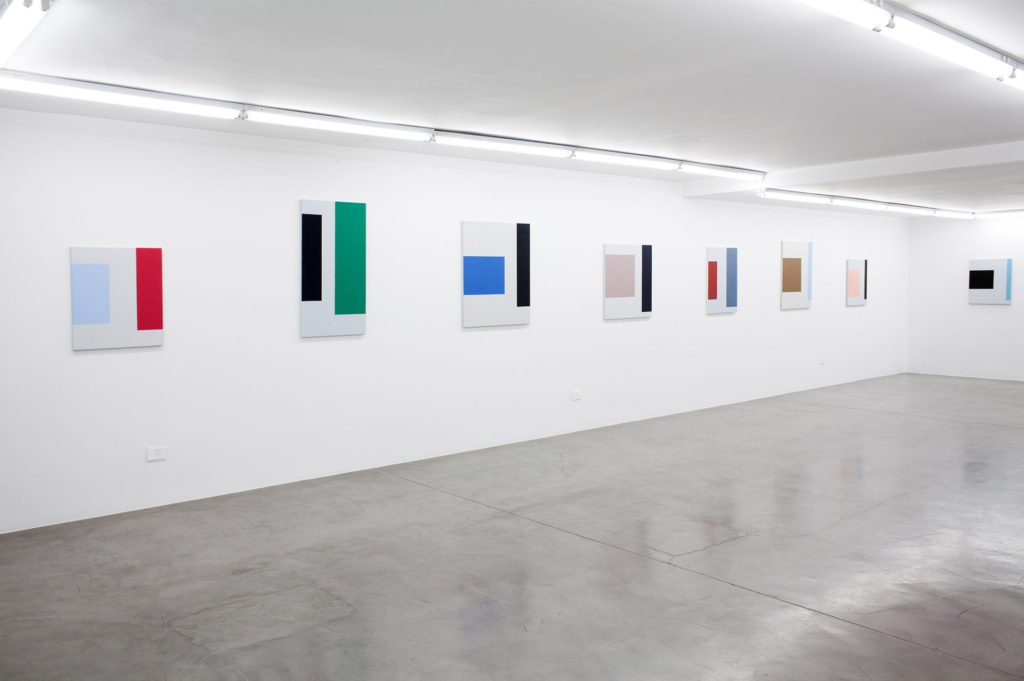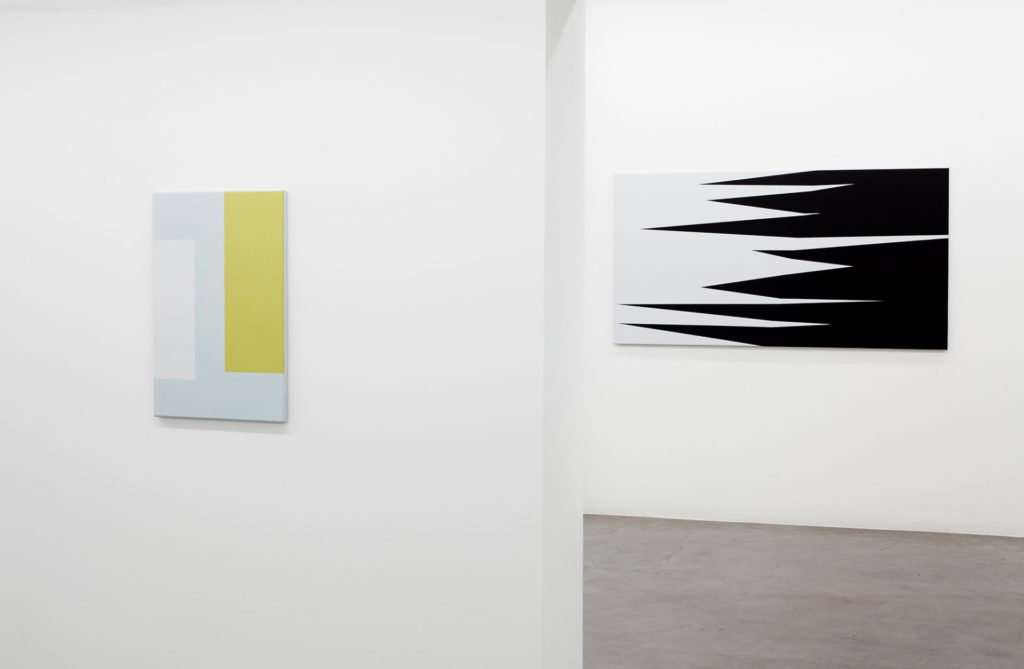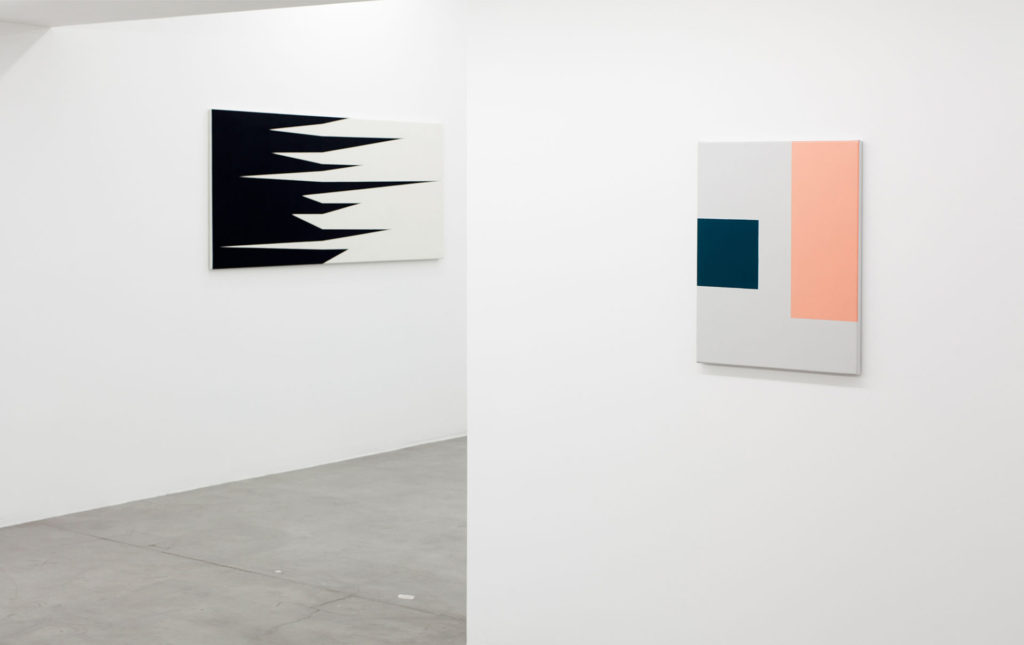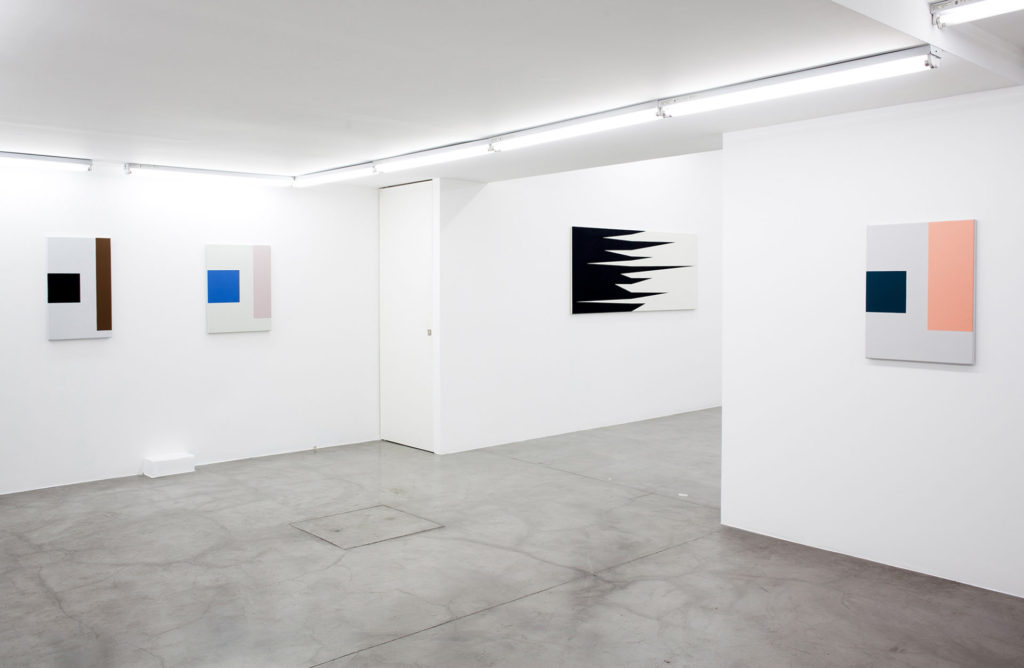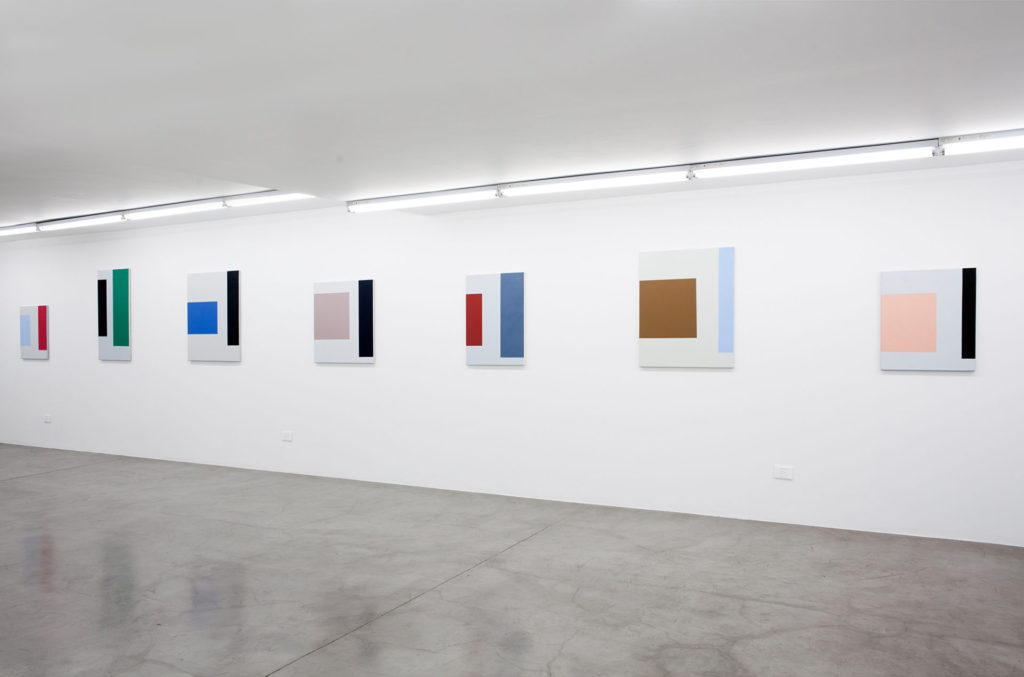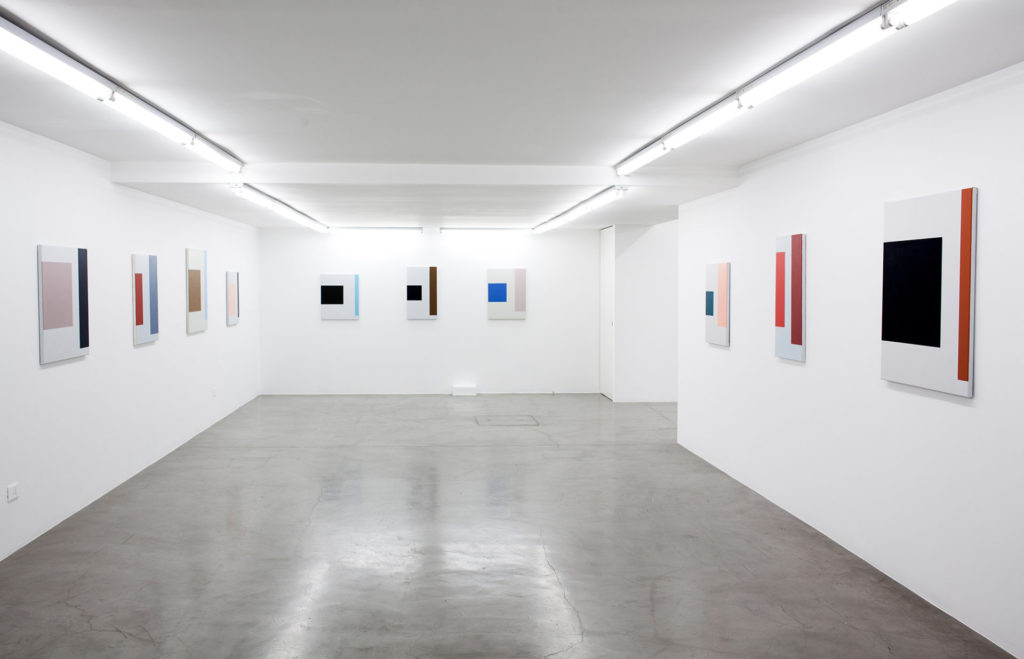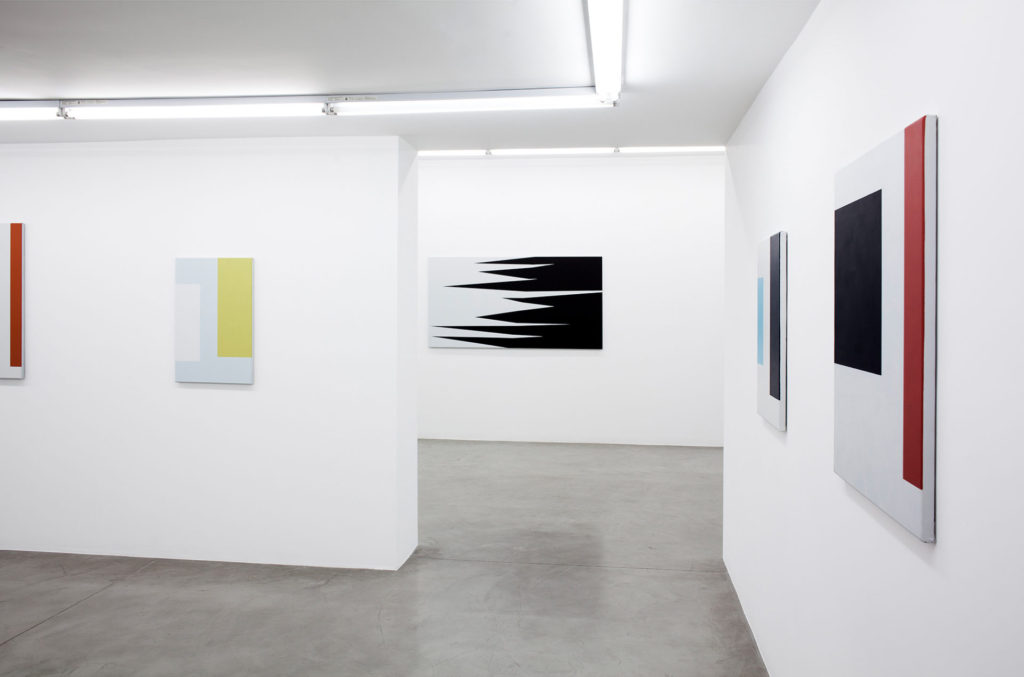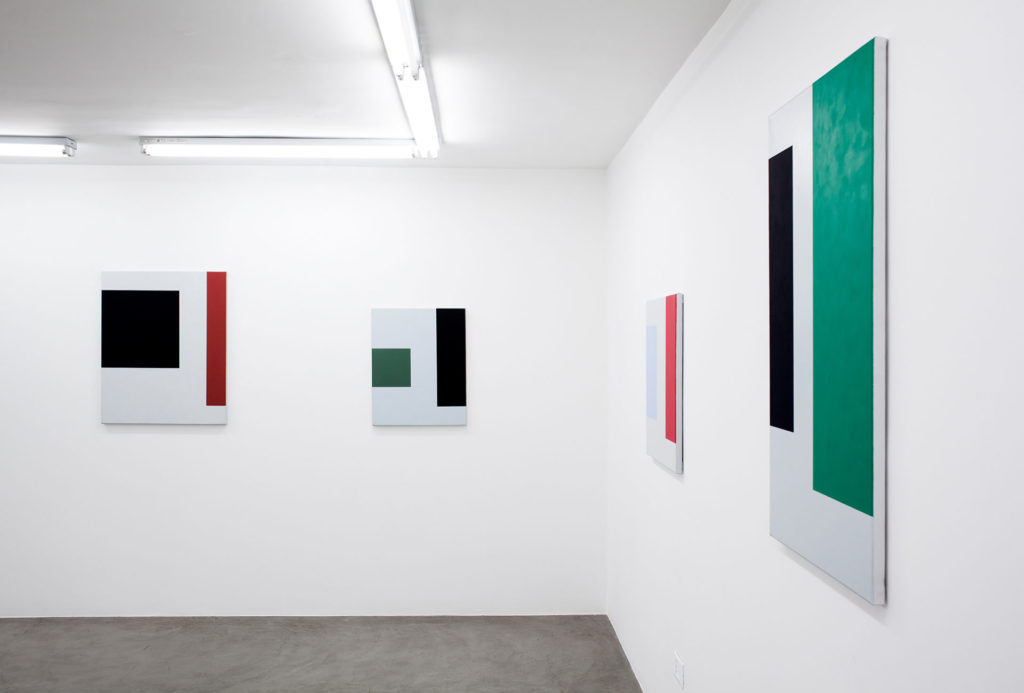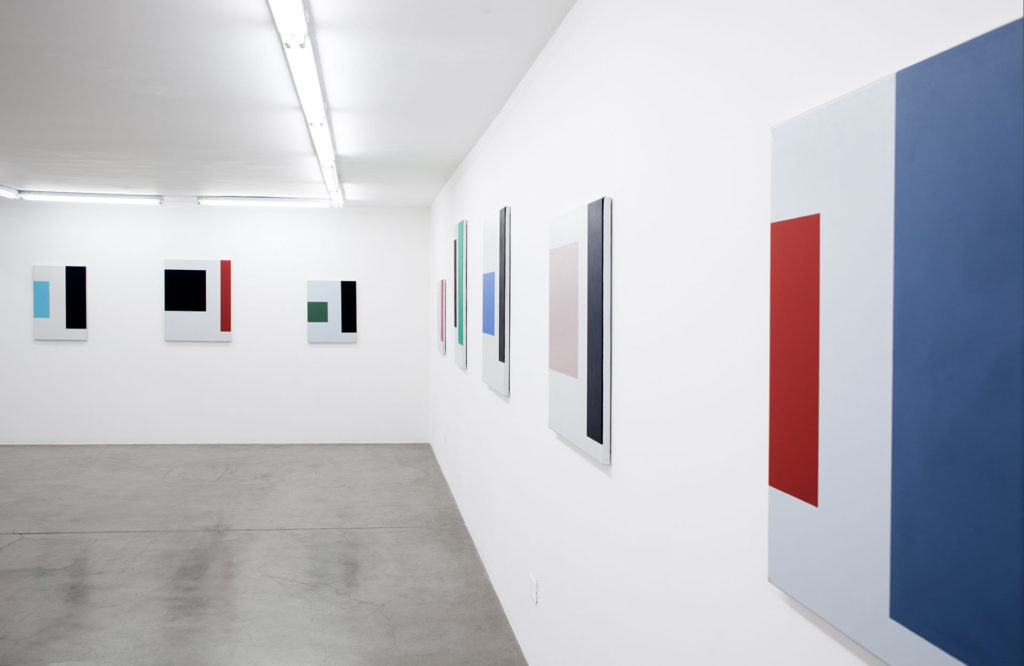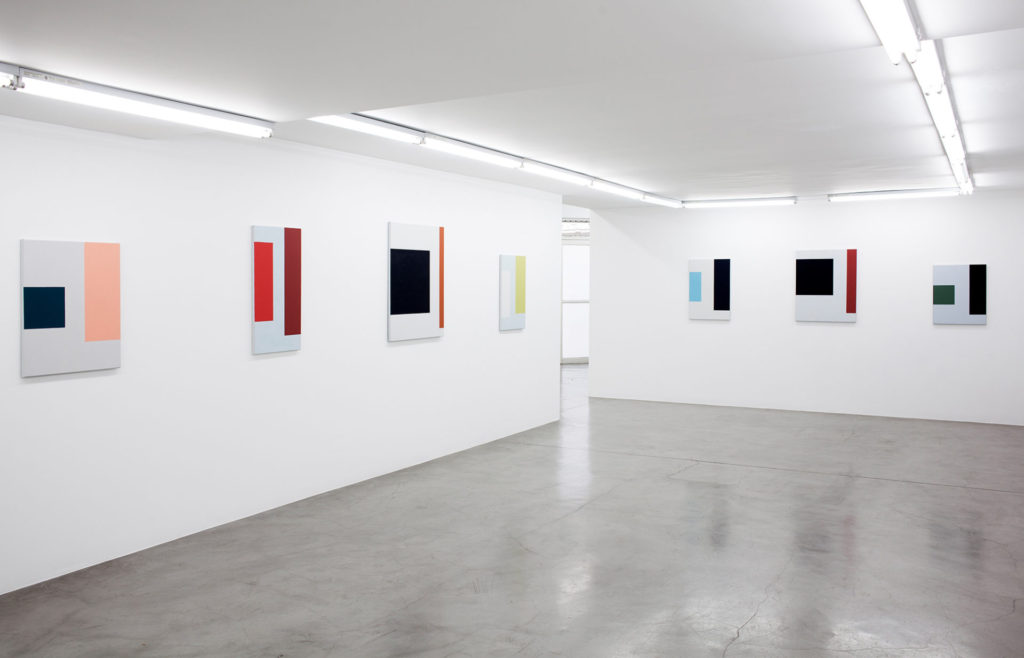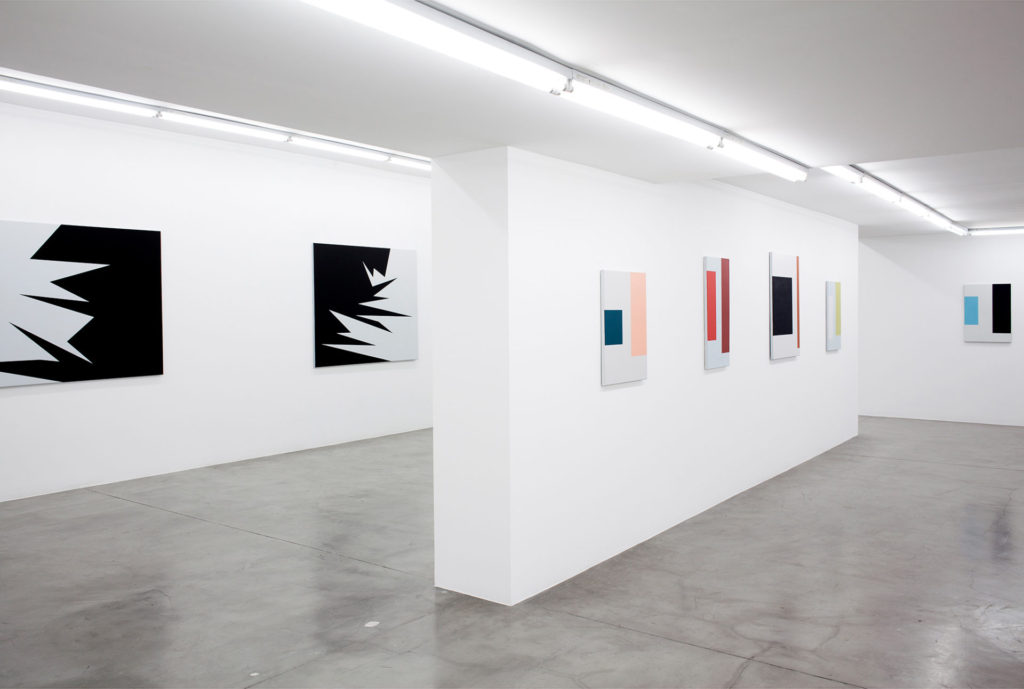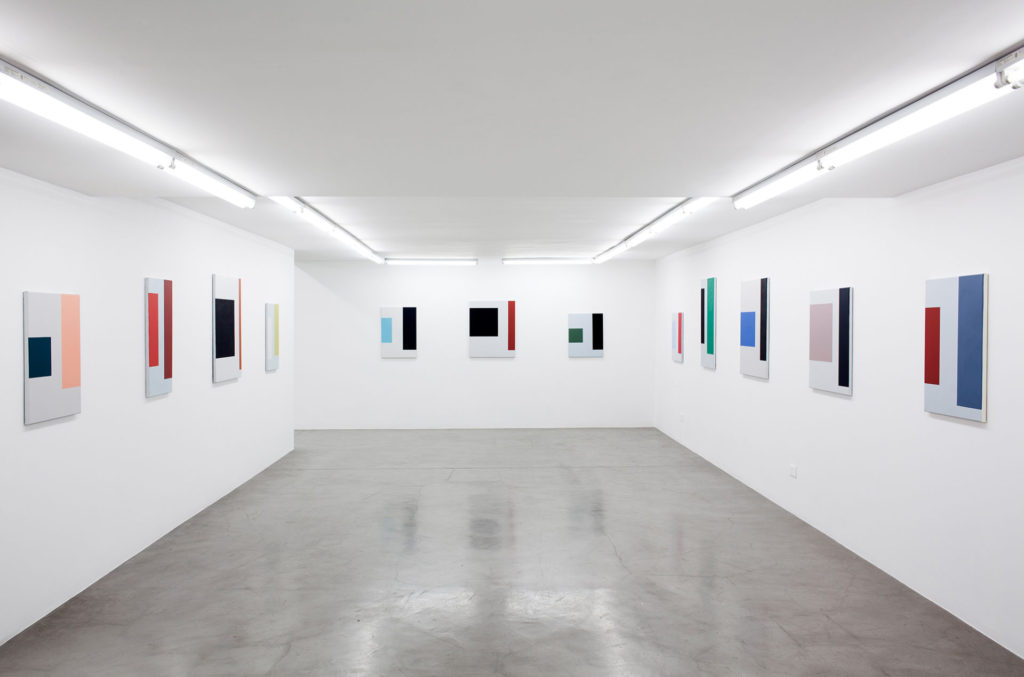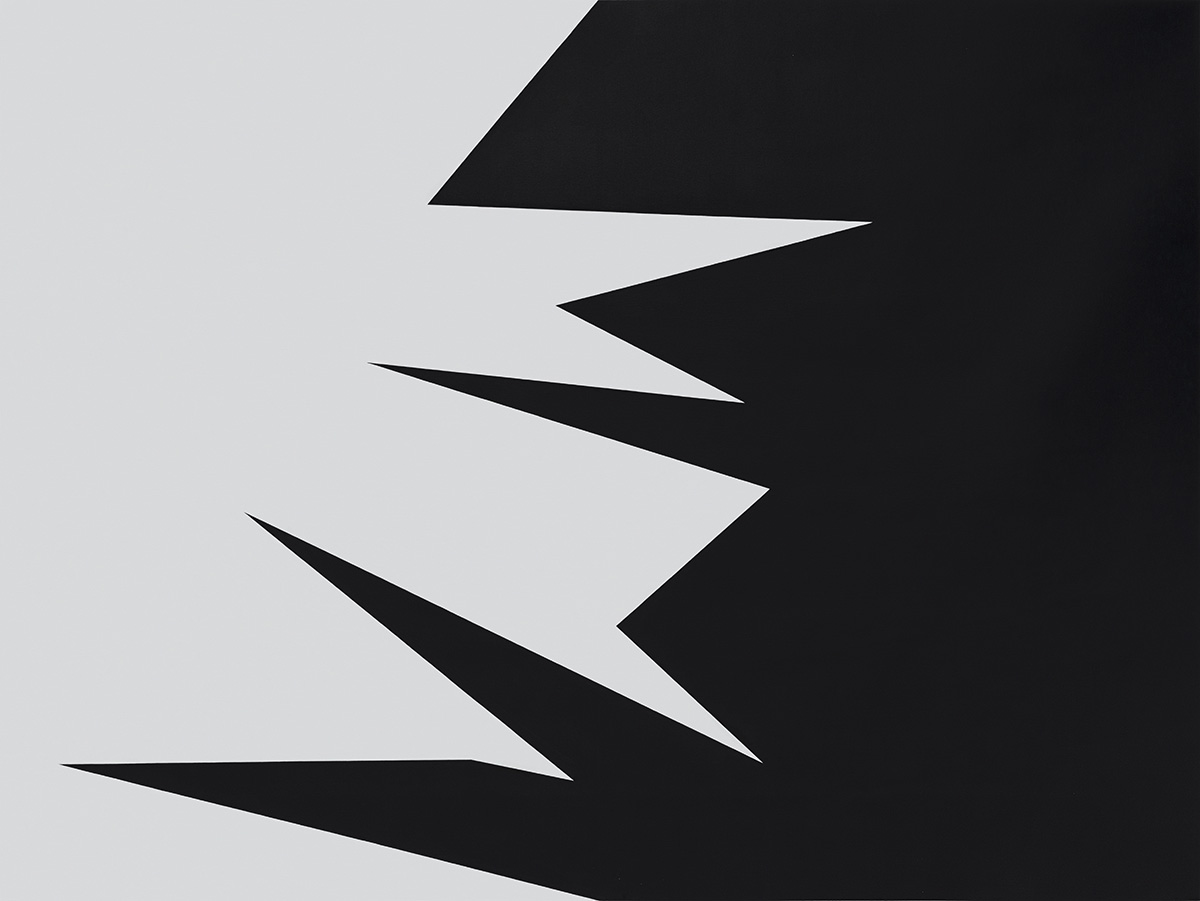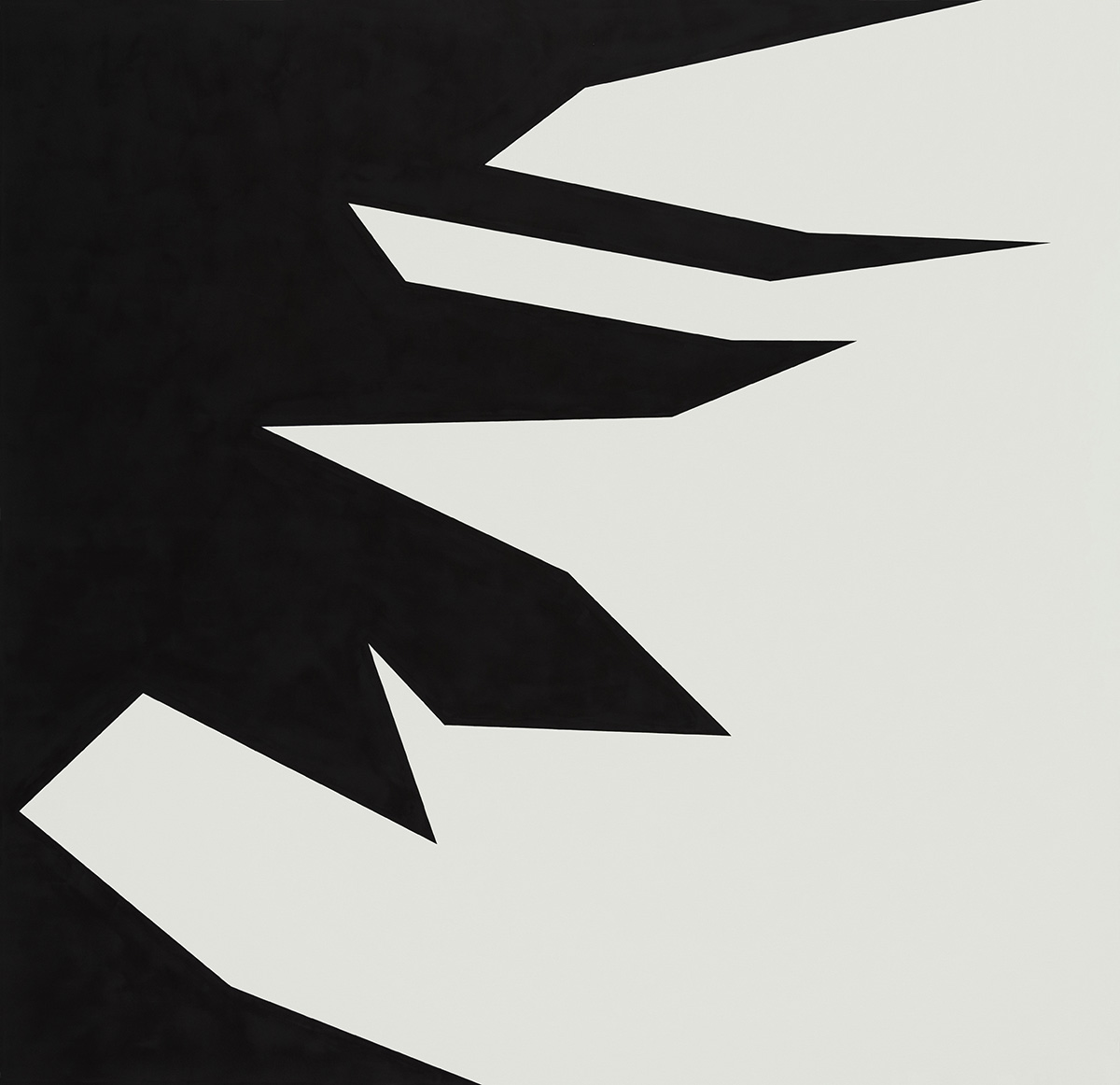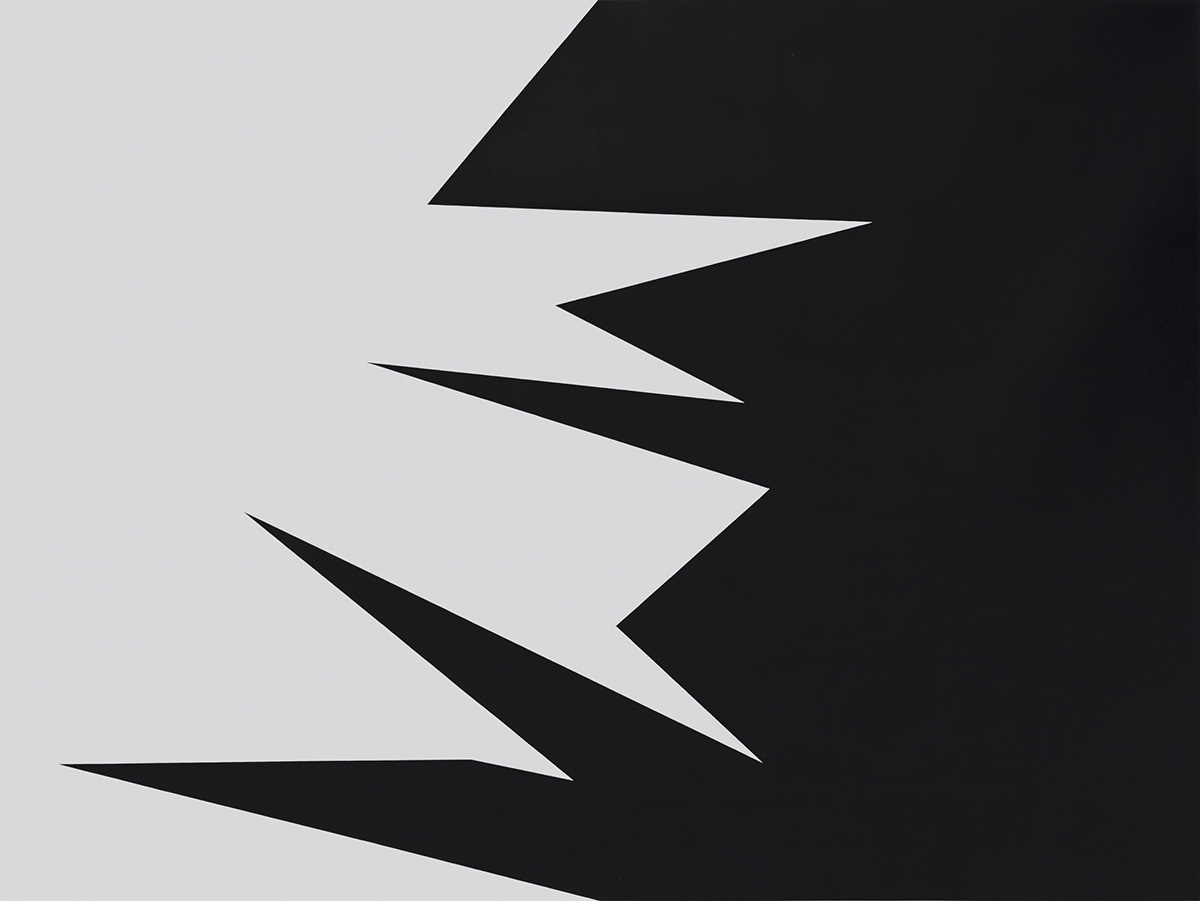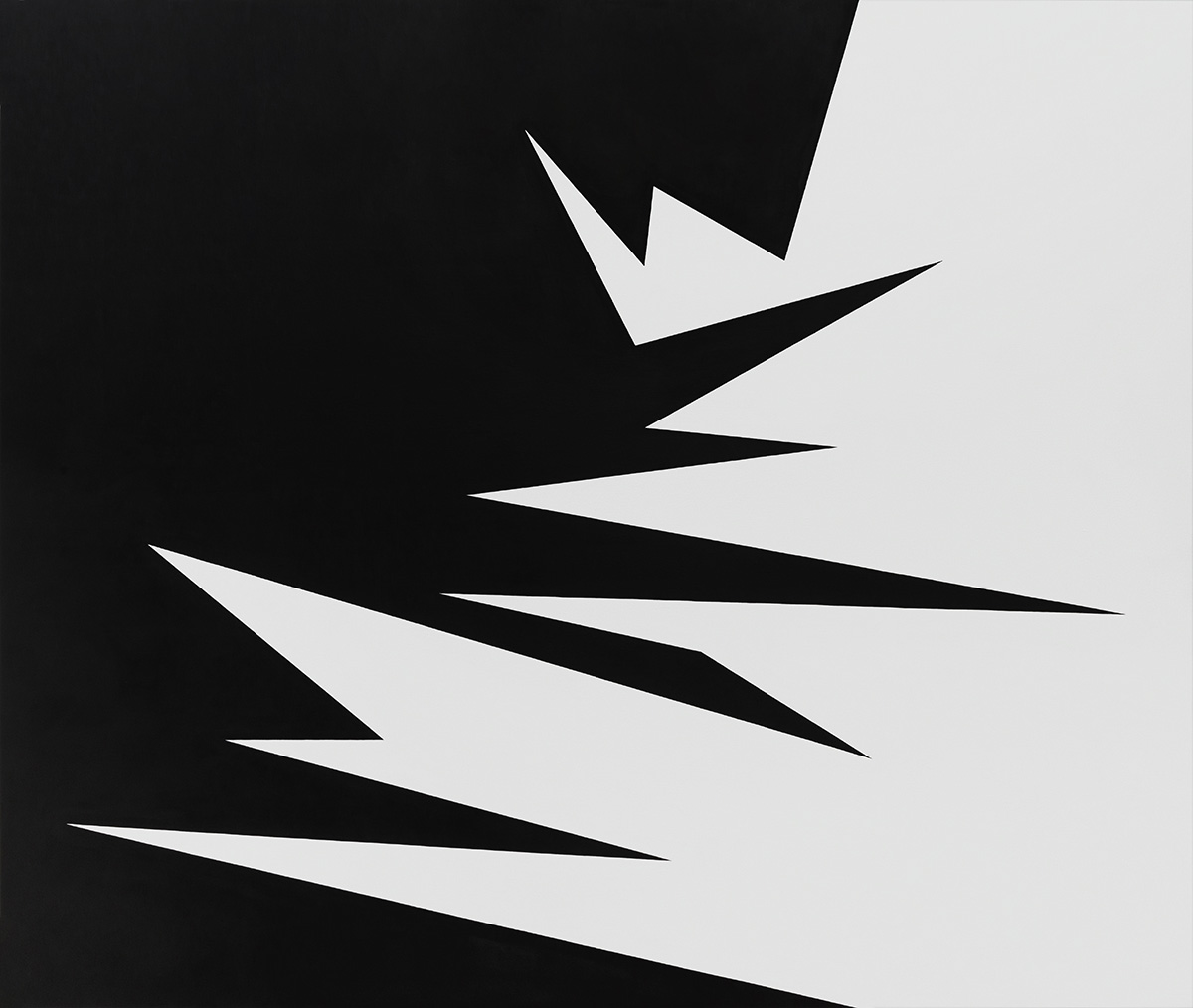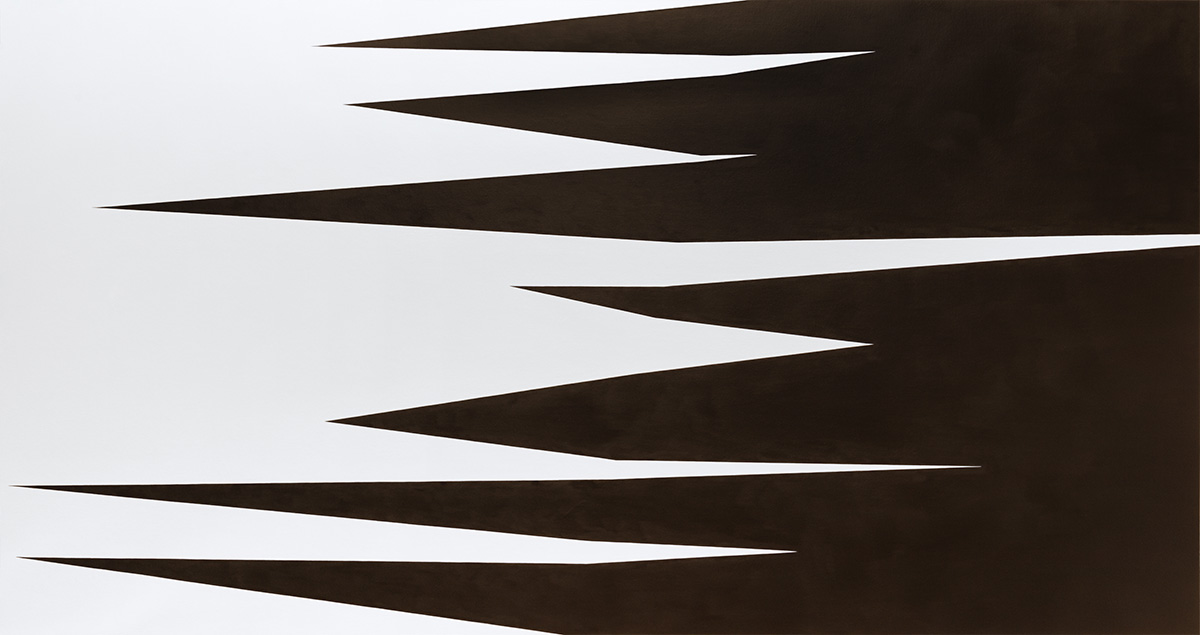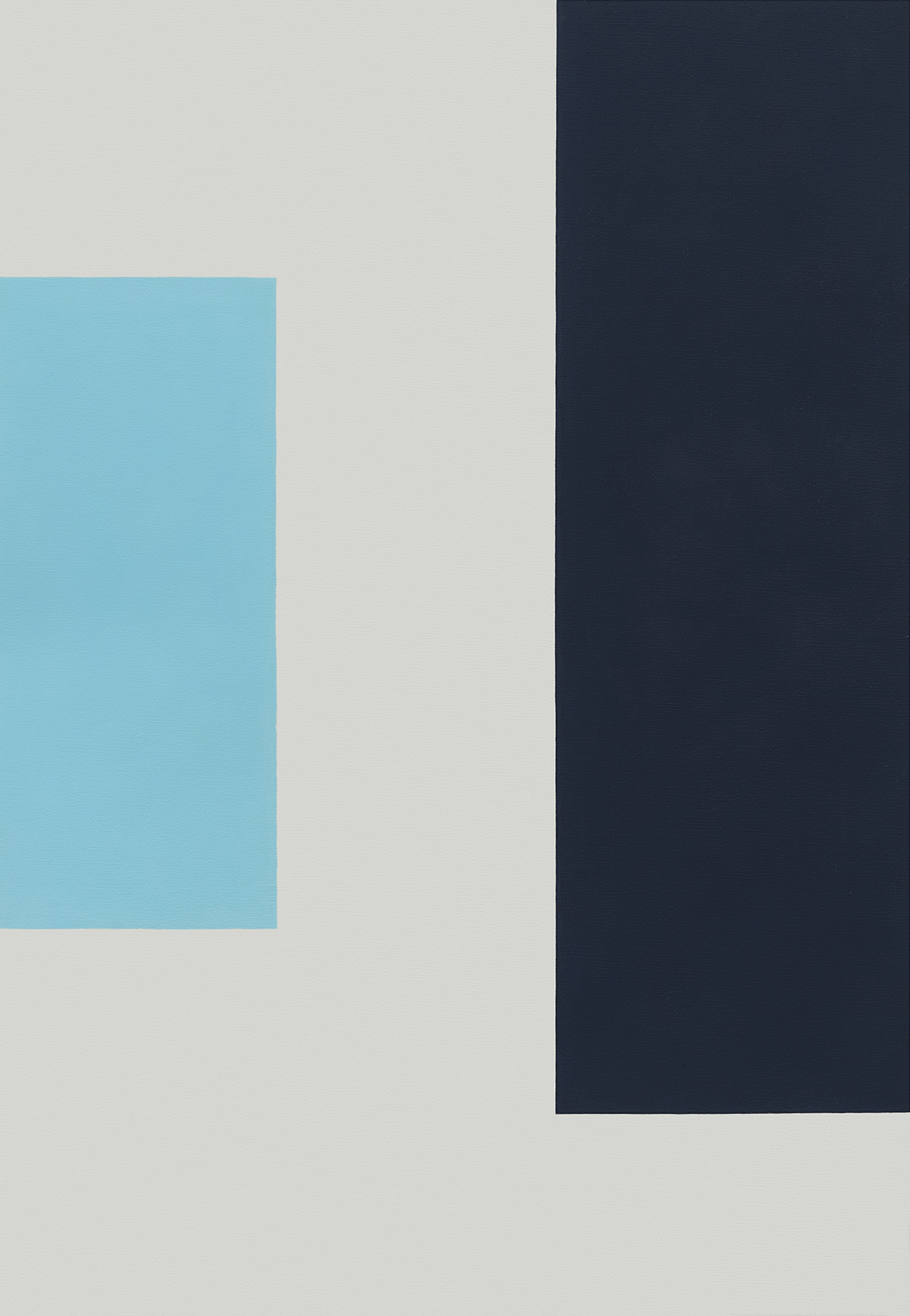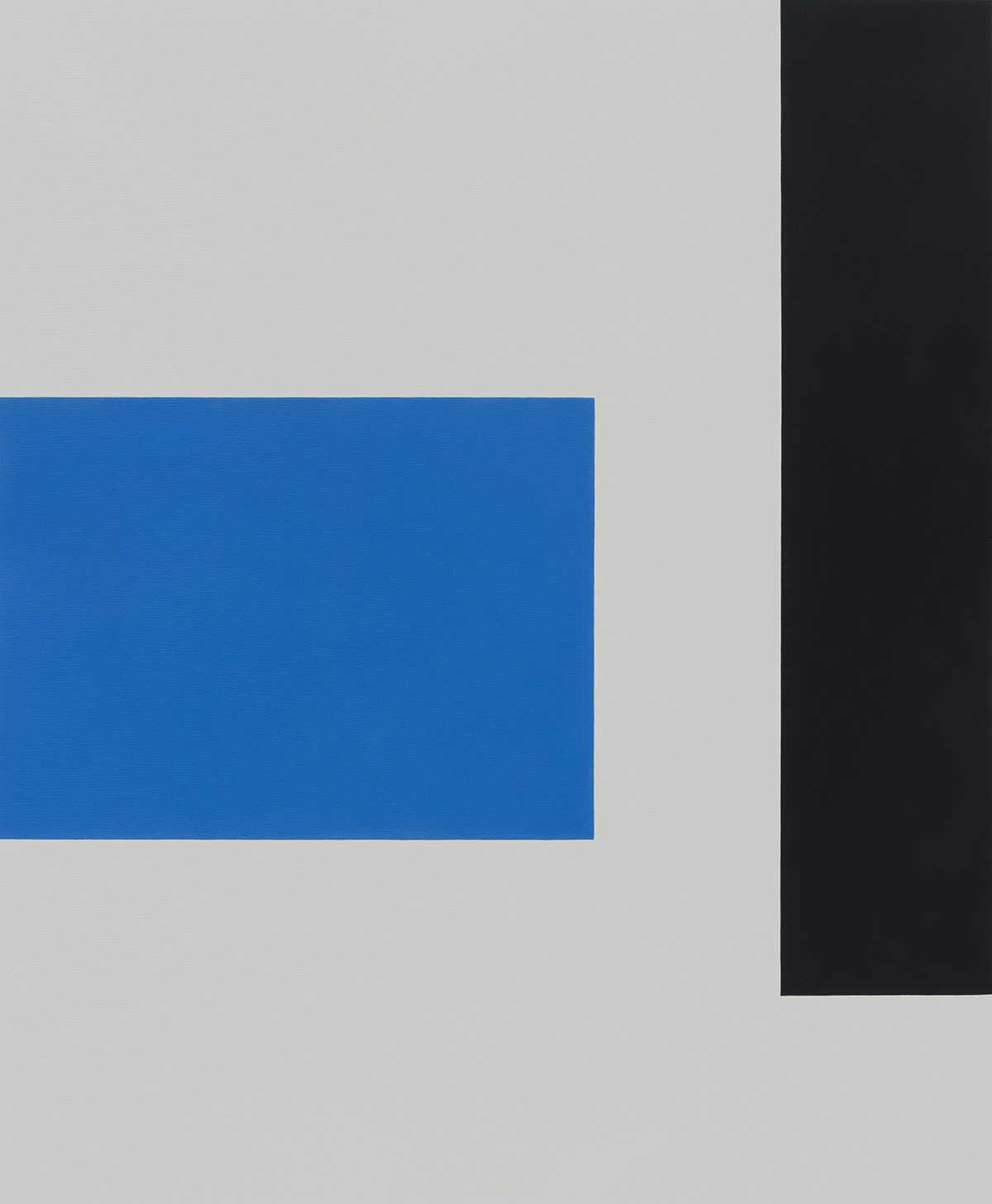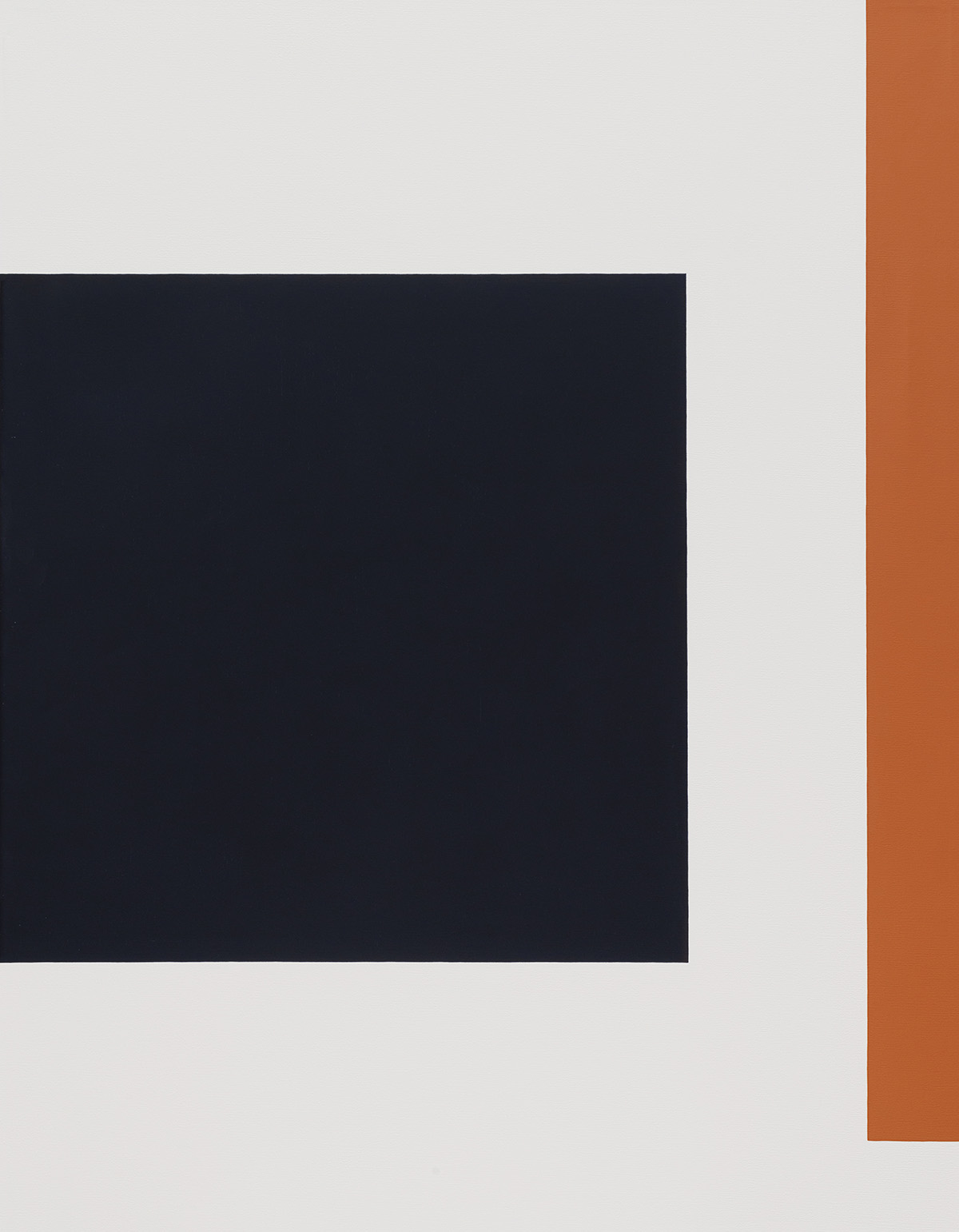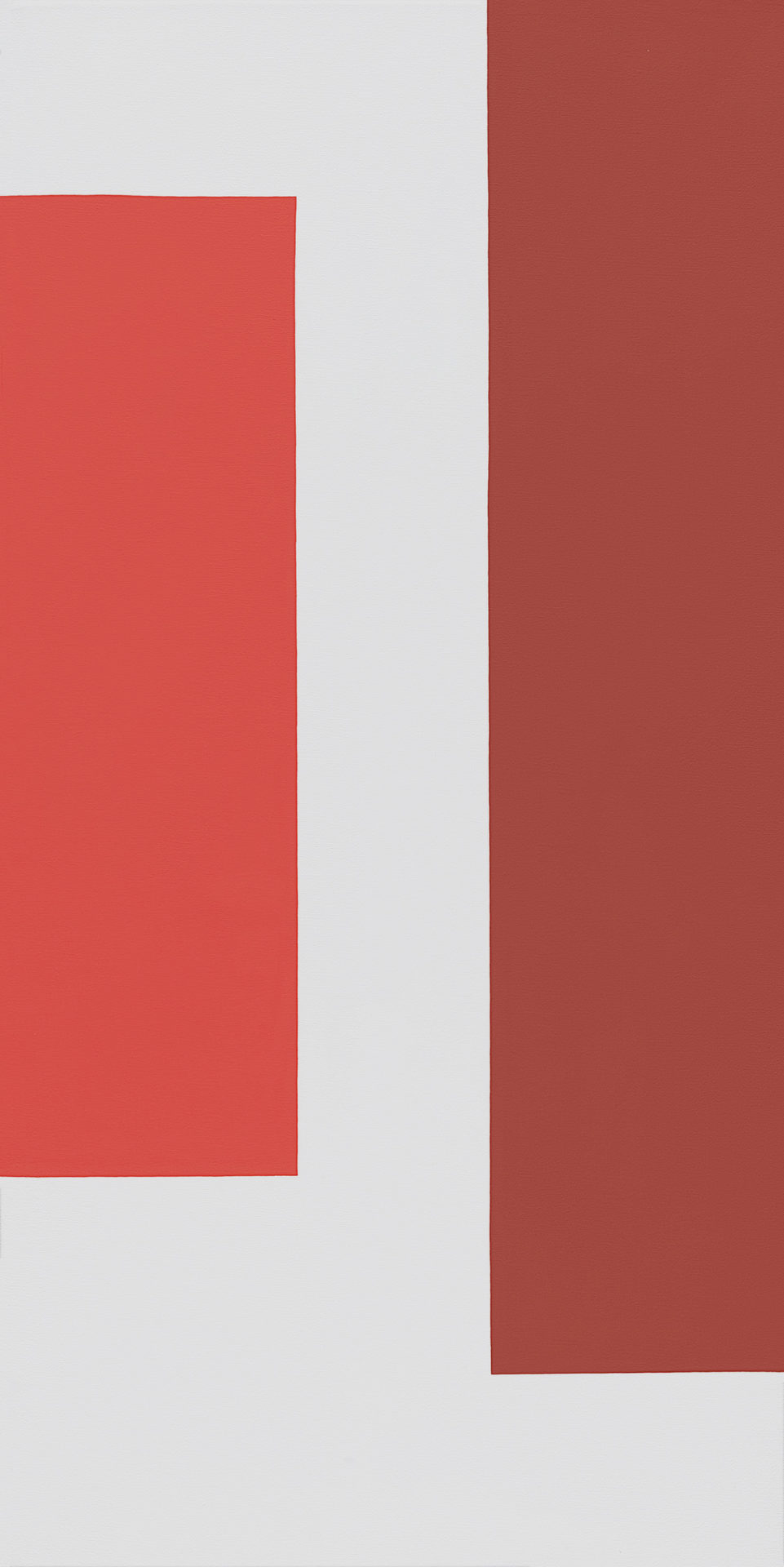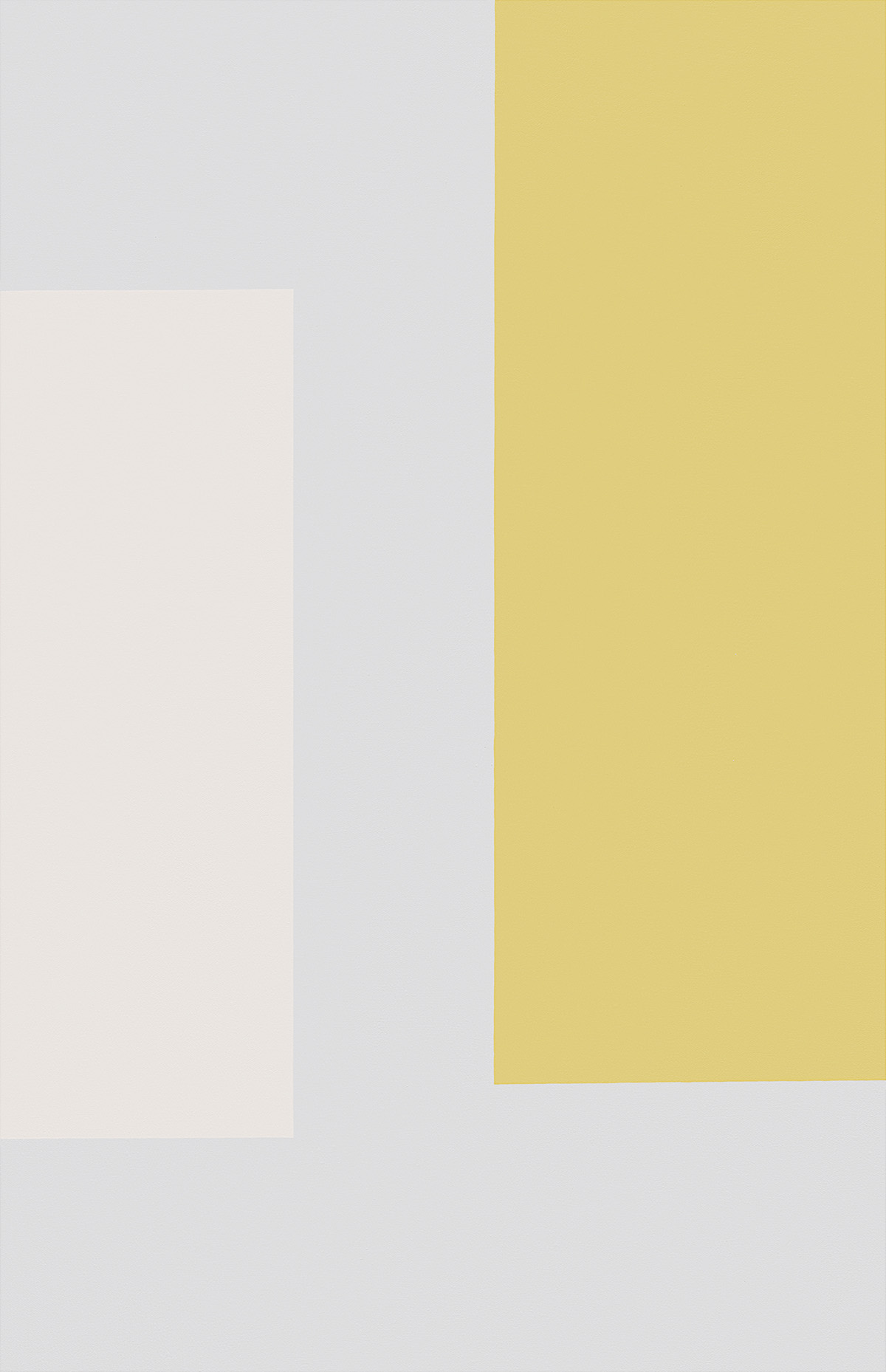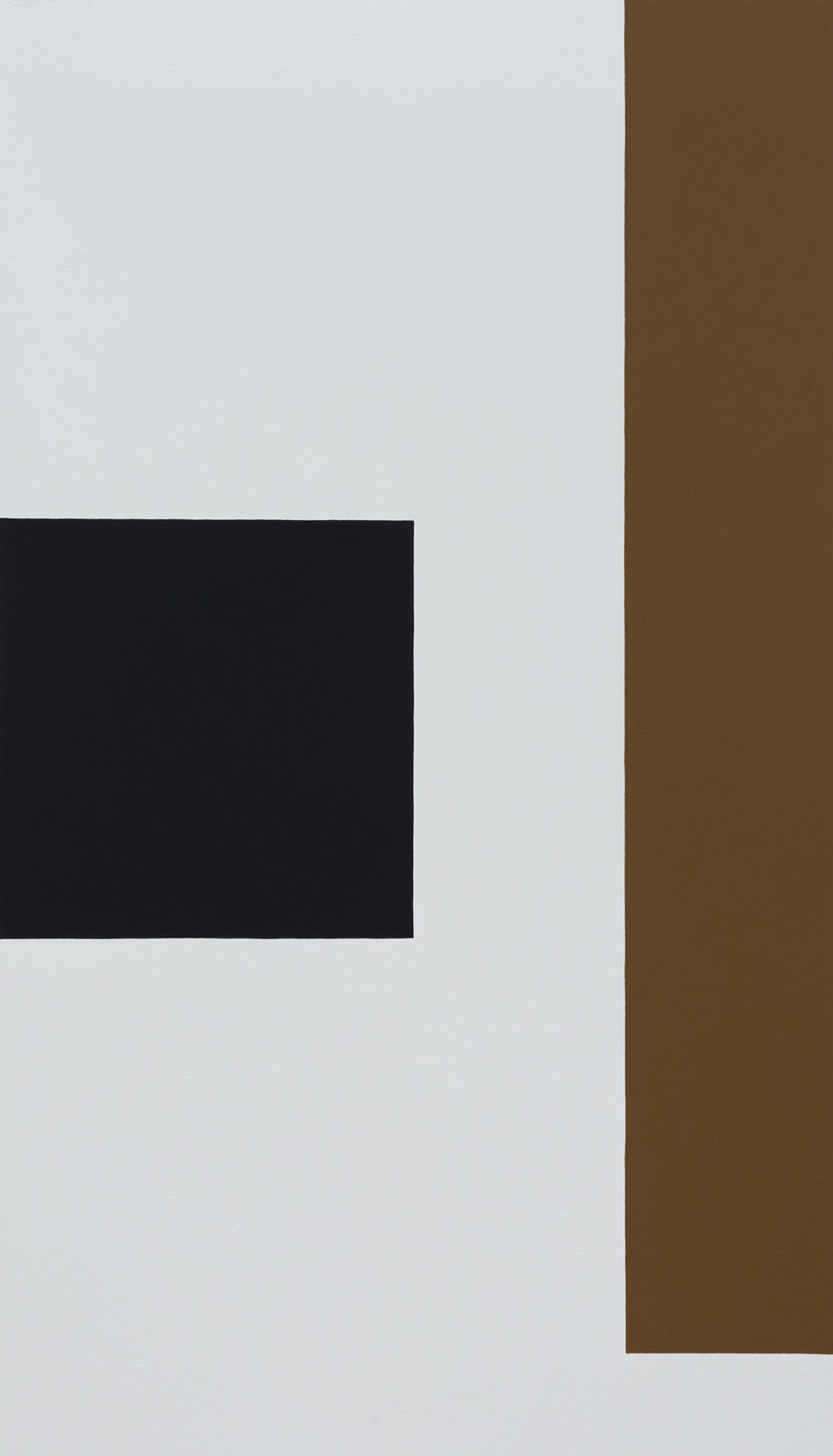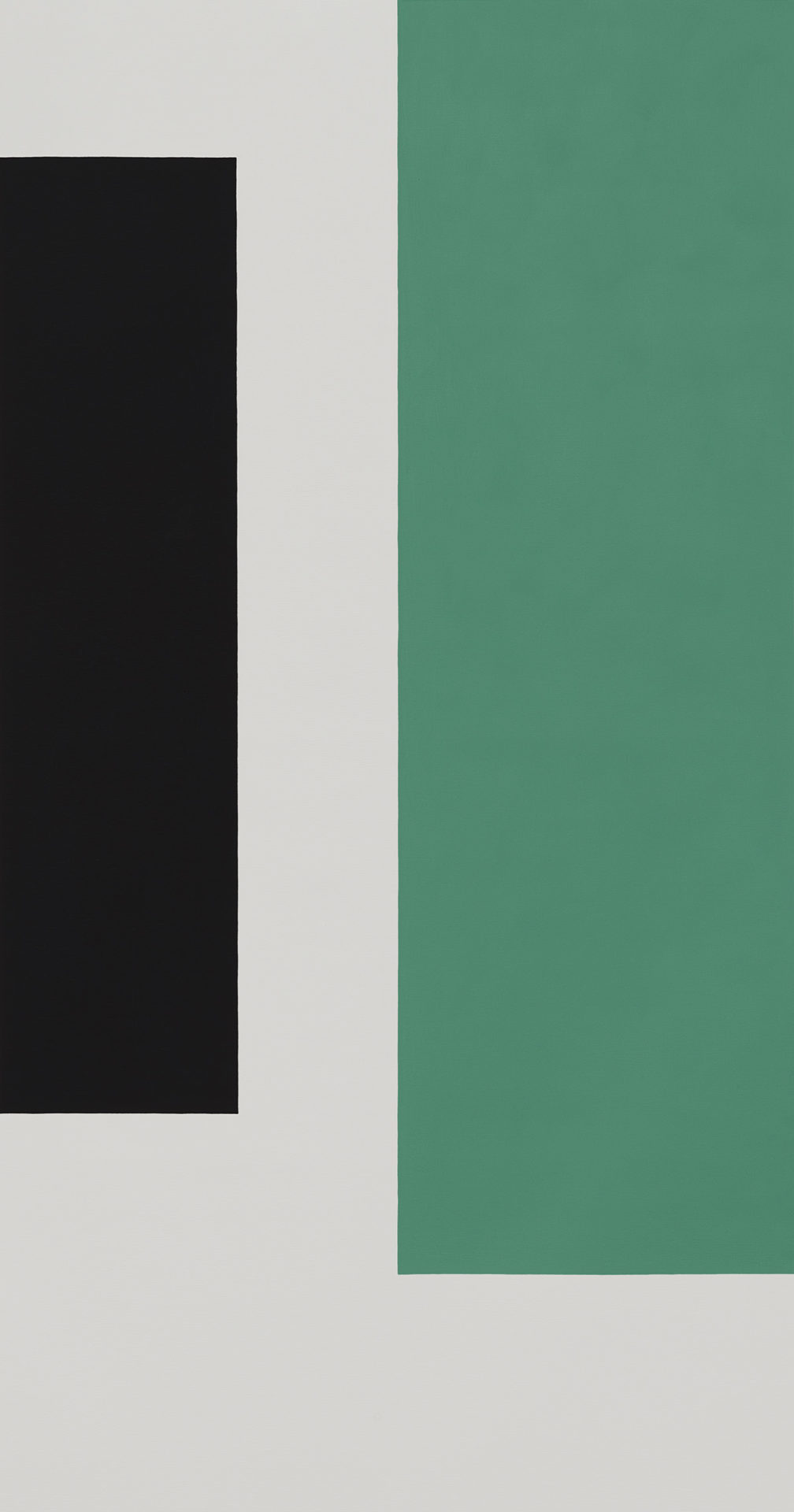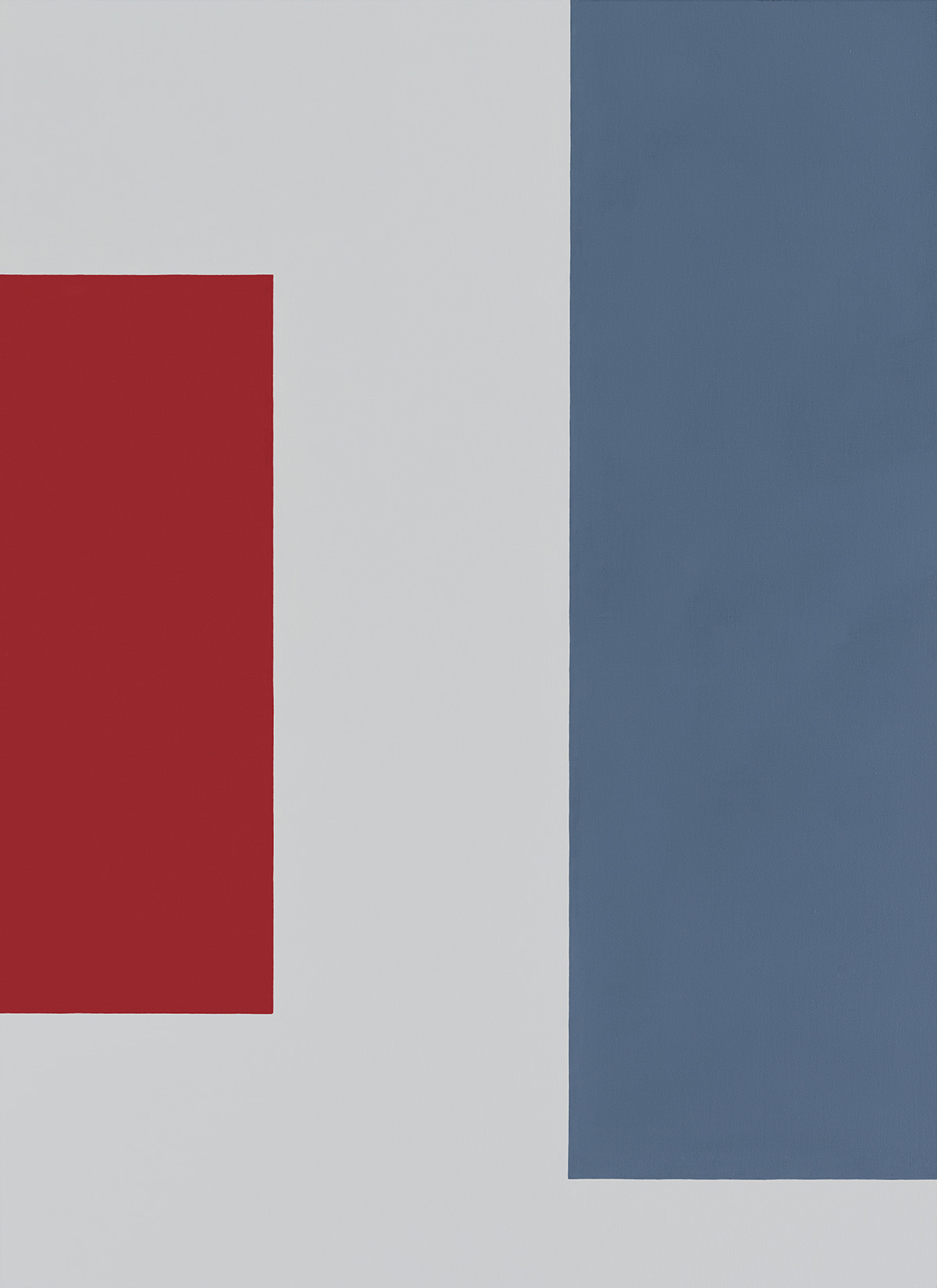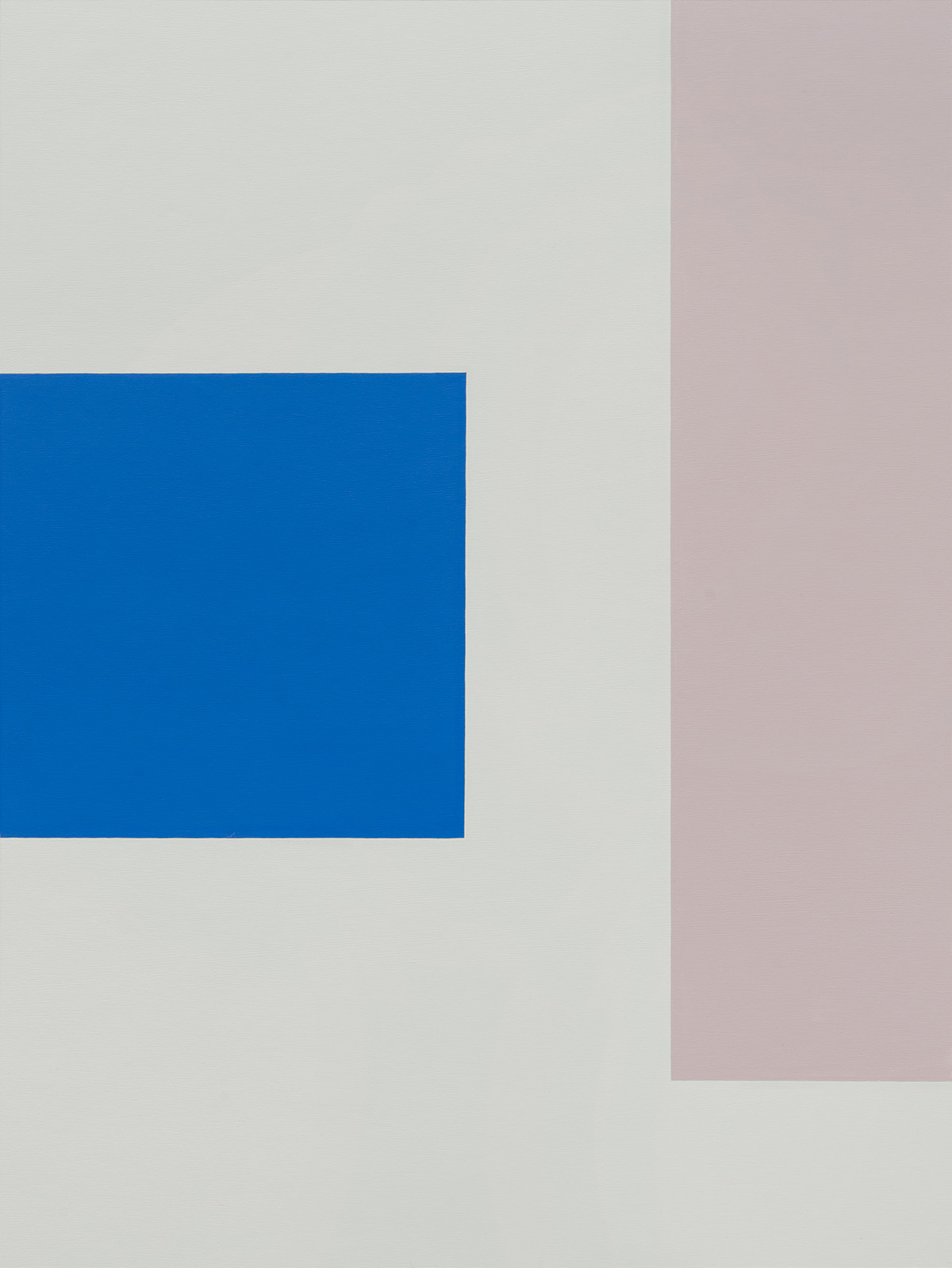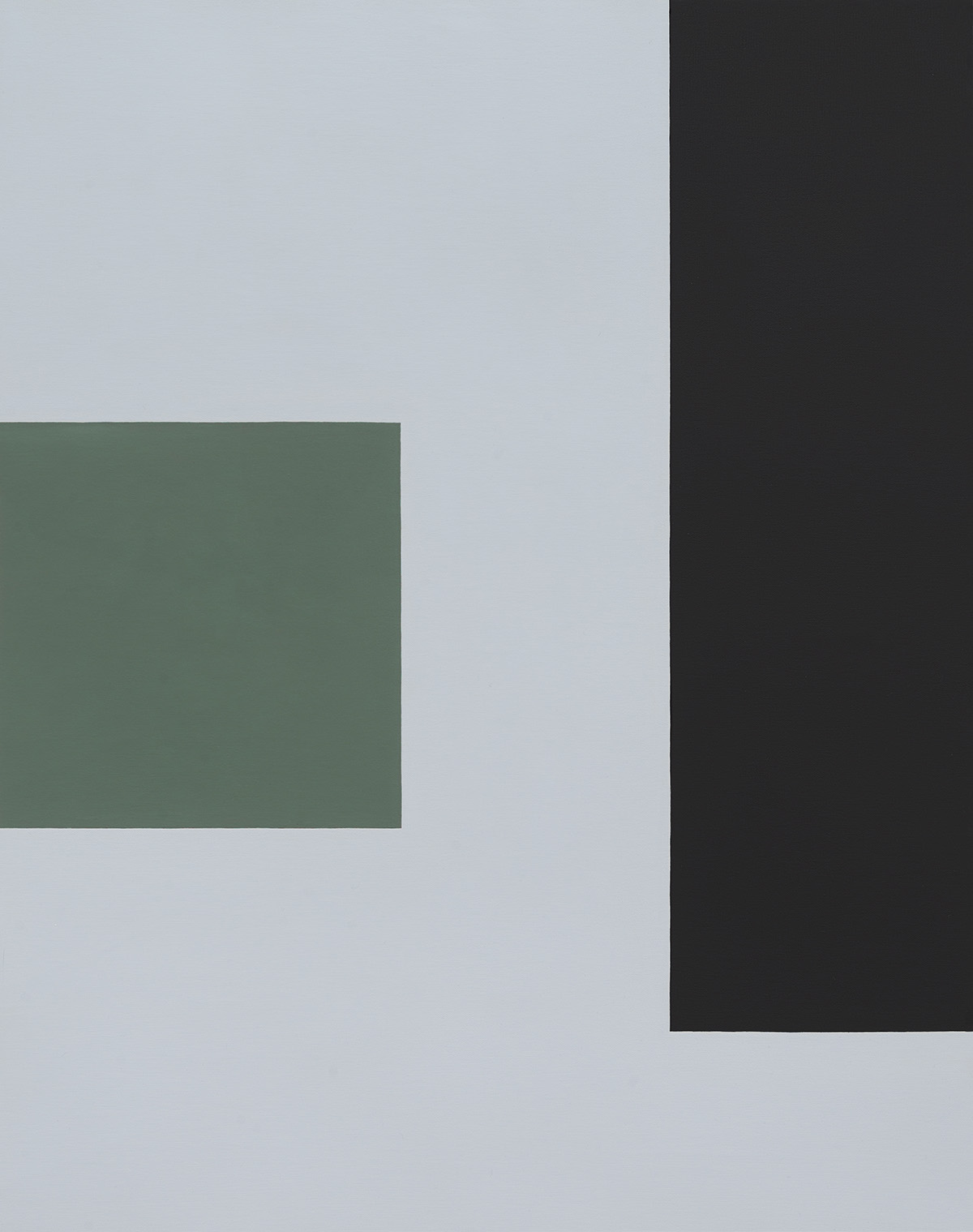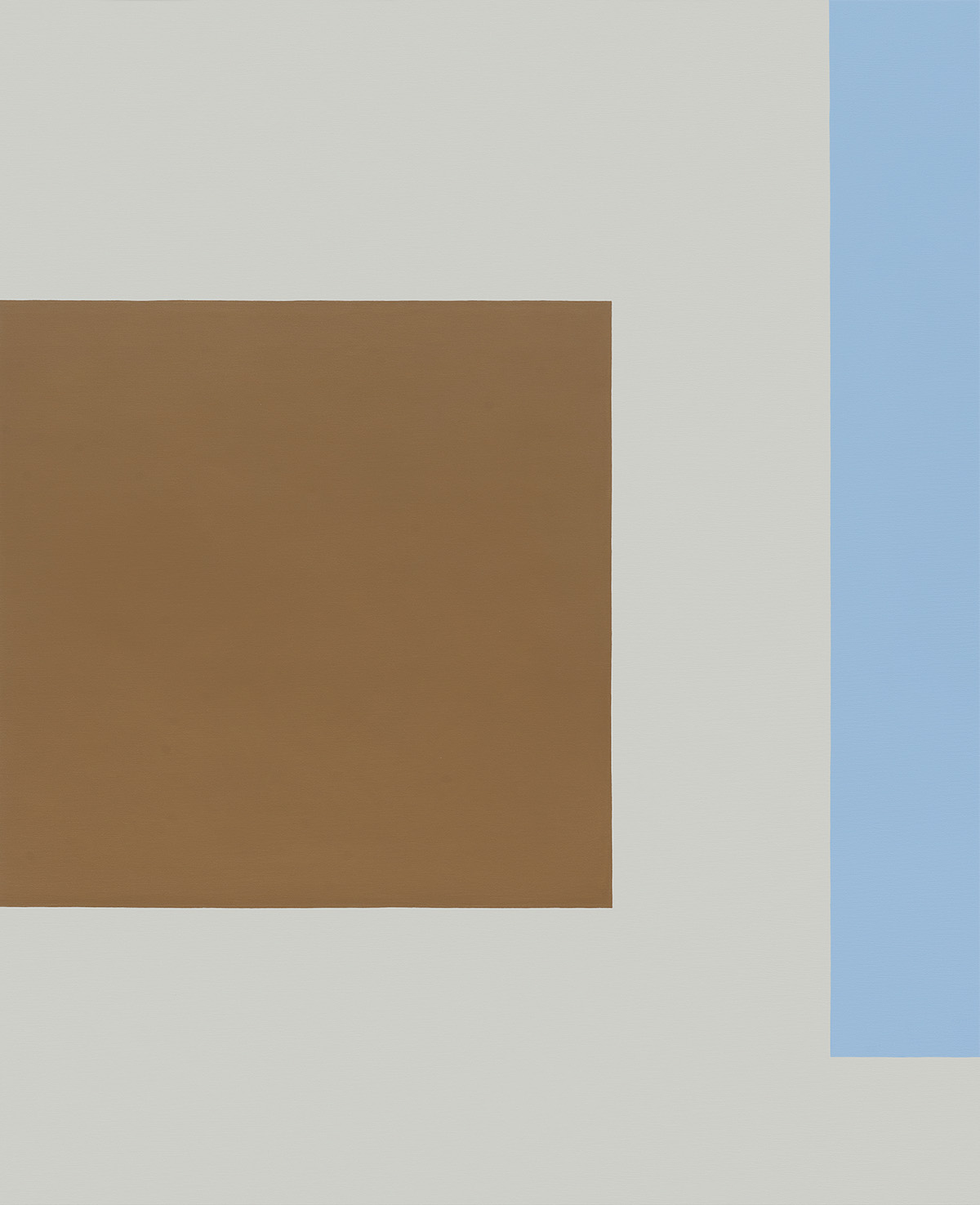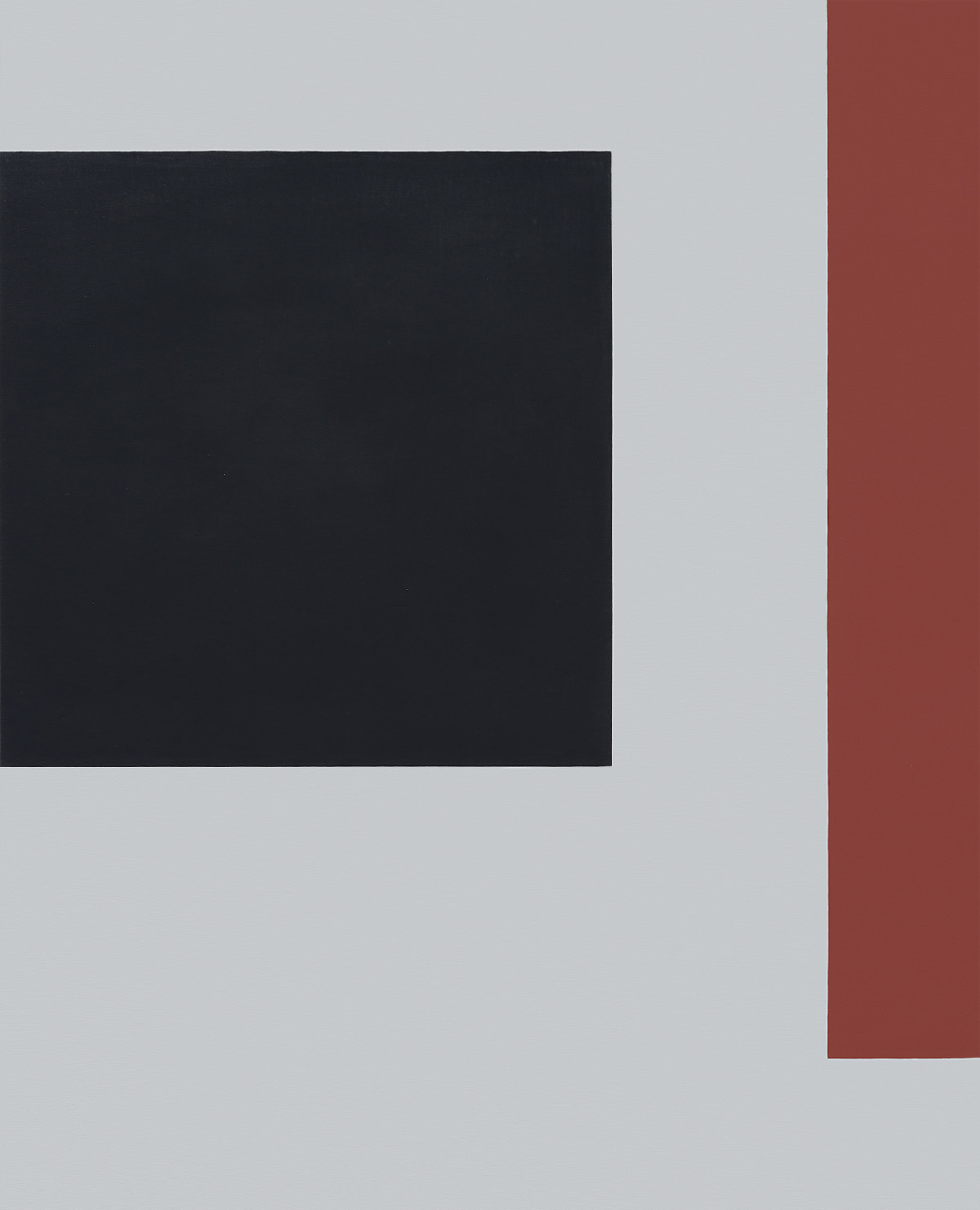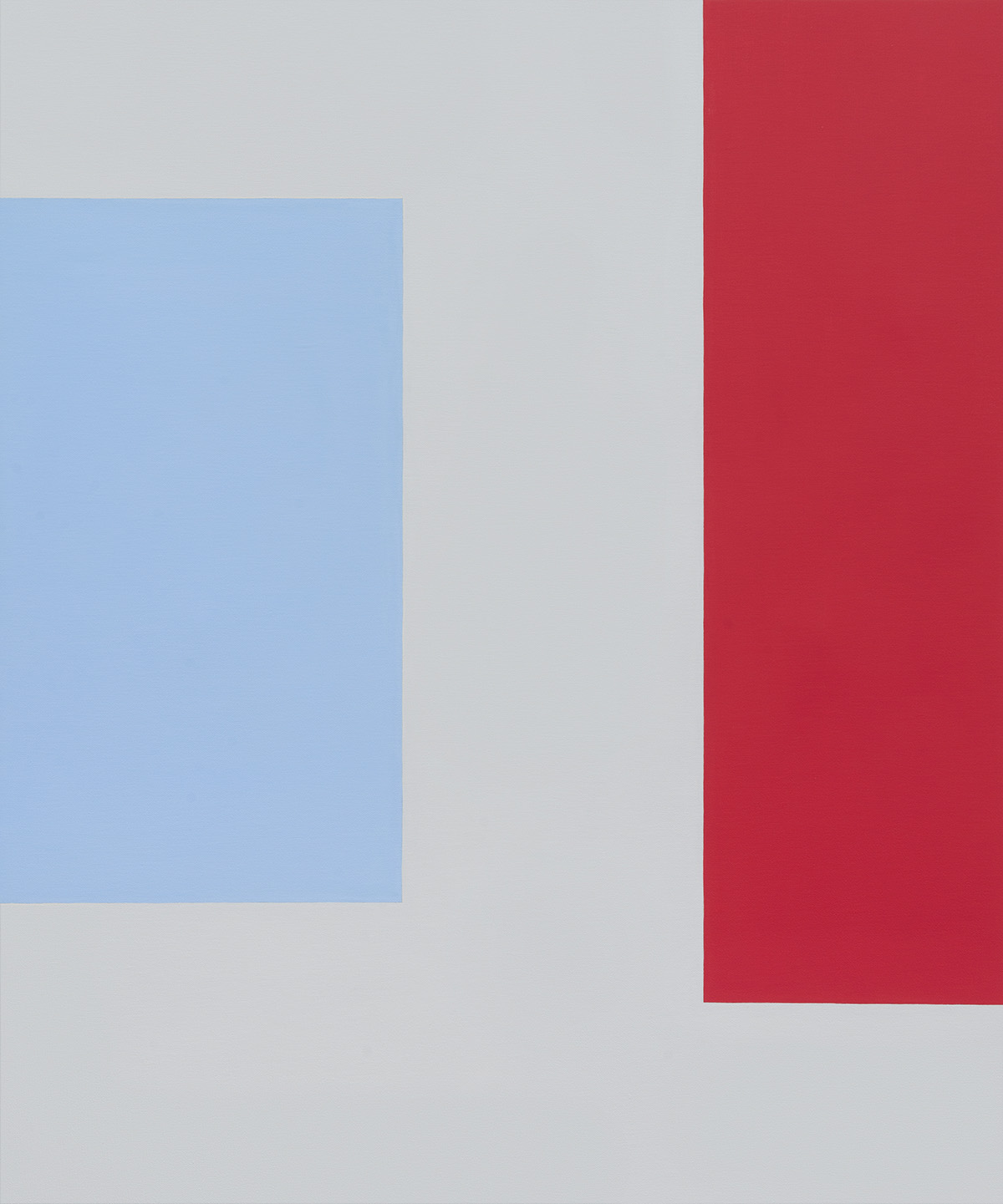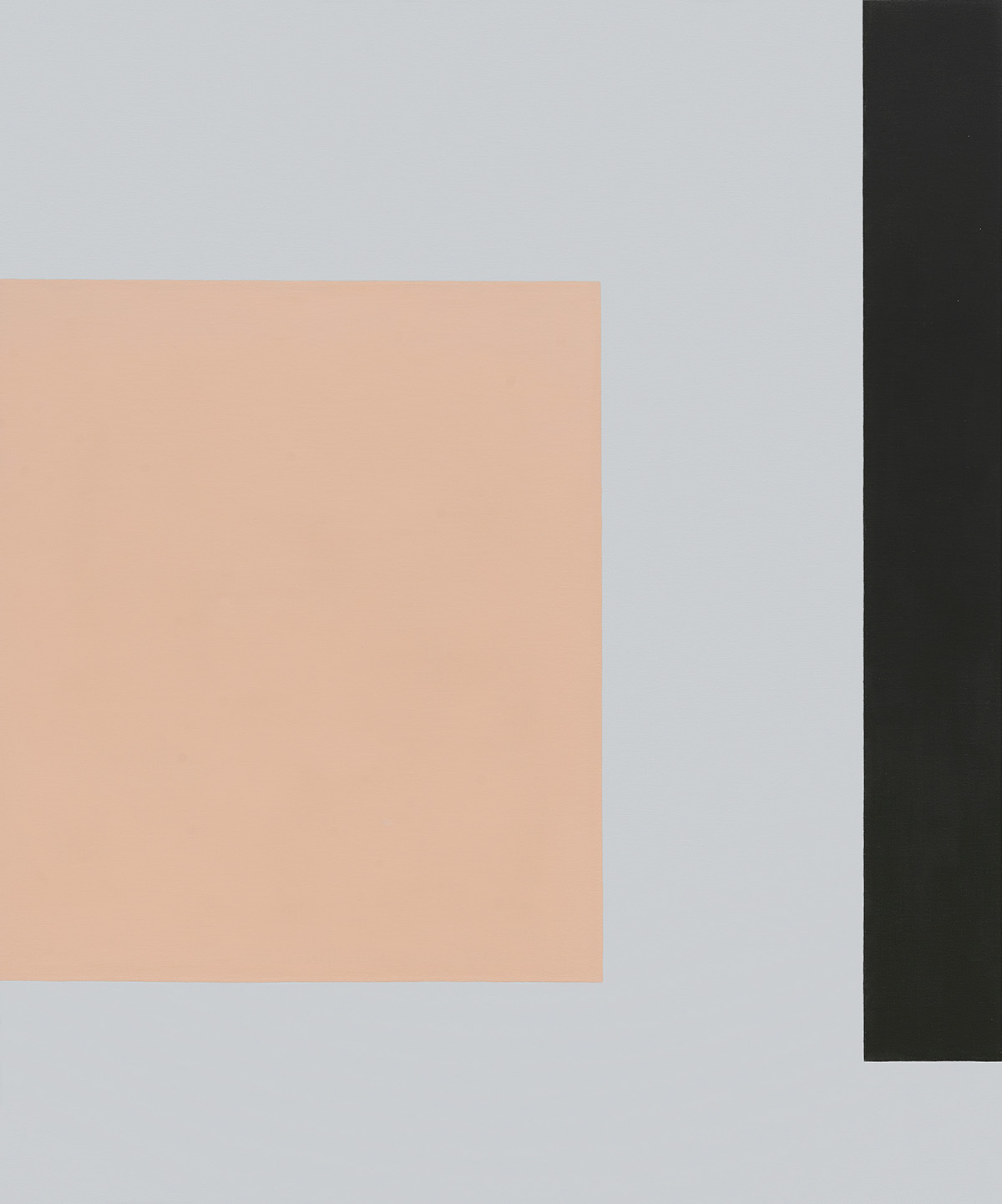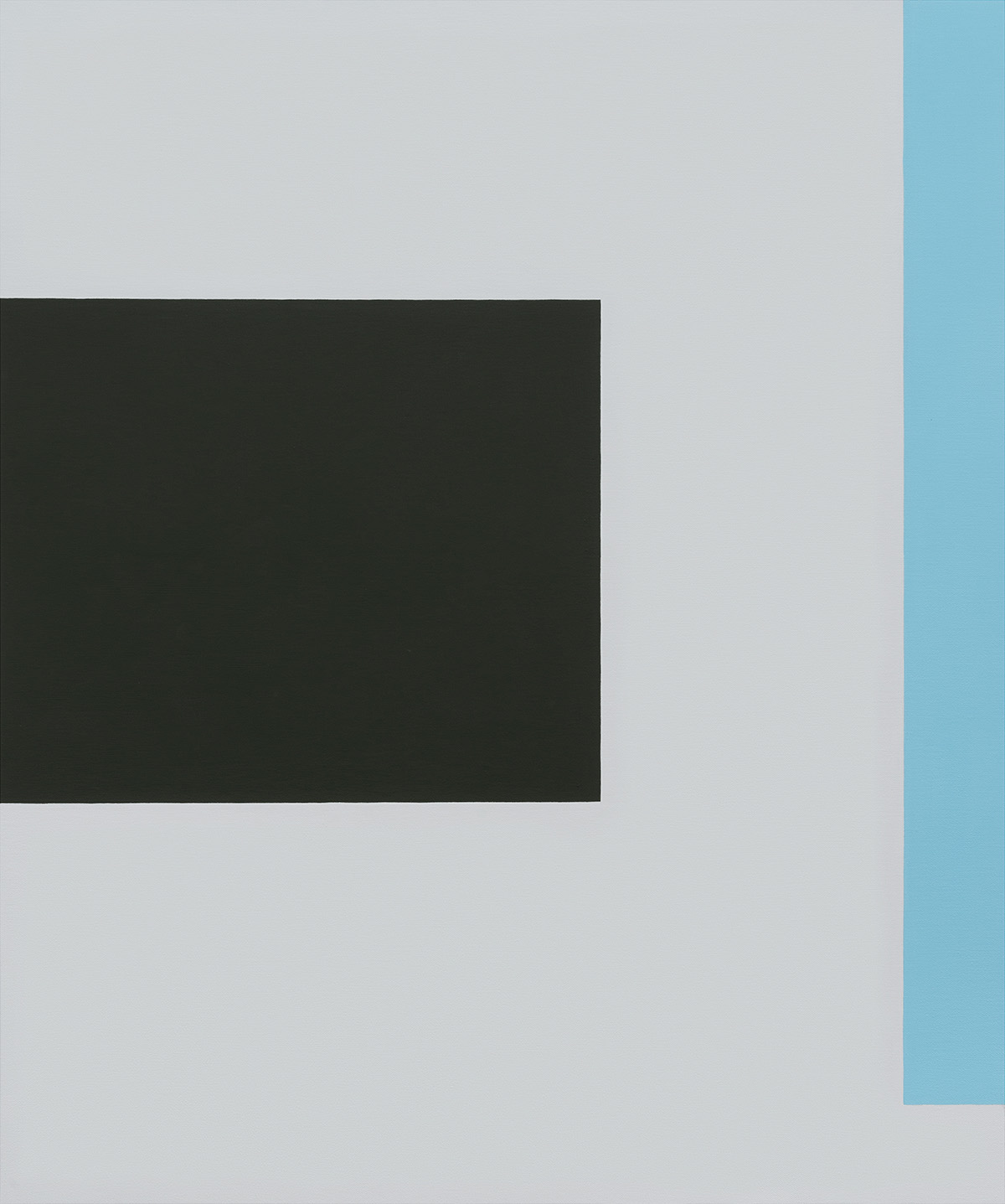UN PERFIL DIBUJADO EN EL ESPACIO & DISTANTE
GILDA PICABEA
NOV 19. 2019 — FEB 21. 2020
EXHIBITION VIEW
Ph. Ignacio Iasparra
TEXT
Gilda Picabea at the Crossroads of Painting
Certain questions never disappear in painting, but return time and again. Forms persist—at the end of the nineteenth century, Aby Warburg aptly sensed them lurking in the ties between ancient art and the Italian Renaissance—making their way time and again into the strokes of the brush. An endurance, reiteration, resurrection of motifs and problems that, in the case of Gilda Picabea’s exhibition Un perfil dibujado en el espacio, takes the shape of abstraction. Some of these revived forms go beyond art; they are humanity’s visual legacy. I am speaking of, for instance, grids, and simple geometric shapes like circles, squares, or crosses. In the specific case of painting, series are a way of organizing repetitions on the surface, of forming groups. In the constitution of the image itself, the tension between figure and background is what challenges, again and again, the flatness of the support and any possible spatial reading. That is the crux of our interrogation of this exhibition of work by Gilda Picabea.
We tend to read images by recognizing a figure on a background—figure meaning an element distinct from the general background. For a figure to stand out there must be a spatial relationship on the surface: we read a foreground and a background, something closer and something further back. Widely studied by the psychology of perception, distinguishing figure and background is one of the perceptive mechanisms activated unconsciously when we come before the images and reality surrounding us. Though it clearly exceeds the confines of art, this question was key to the debate and research of Argentine concrete artists.
I will dwell, if only briefly, on this point to shed light on how Gilda’s proposal relates to Argentine abstraction and its debates. The avant-garde movements of the forties—specifically, the Asociación Arte Concreto-Inveción whose members included Edgar Bayley, Alfredo Hlito, Lidy Prati, and Tomás Maldonado—were concerned, whether in their theoretical works or in their paintings, with the self-referentiality of the painting as two-dimensional surface. Those artists understood that a non-representational visual structure required abolishing the figure-background reading and challenging the structure of the traditional support—hence, the exaltation of the two-dimensional plane. As device, the cut-out frame seemed to do away with that figure-background reading on the two-dimensional surface. Altering the frame according to the painting’s visual requirements meant not only breaking with the traditional representational format, but also annulling the relationship between figure and background. Fracturing the frame’s orthogonal structure
and releasing forms from it was a means to solve a problem, to undermine the conventions of the human cognitive strategy deployed to interpret images.
That solution eventually, though, ceased to be effective. The cut-out frame led to the exaltation of the architectural wall and, hence, no longer solved the problem of spatial perception: a new figure-background reading was generated where the cut-out frame became the figure and the wall the background. So concrete artists resumed study of the figure-background relationship on a surface. The aspirations of the young avant-garde artists and the possibilities or limitations of painting as medium were, it seems, at a maximum point of tension. As, years later, Alfredo Hlito, whom Gilda looks to in her reflections on painting, put it: “The requirement of flatness couldn’t be taken beyond a certain point without leading painting up a dead end.” Another of that painter’s reflections on the limits of painting could easily be applied to life itself: “It’s amazing how much energy painting has wasted over the course of its life to oppose what there is.”
In Gilda’s art, these problems return like ghostly whispers; these debates resurface in her paintings. The figurebackground reading is the central concern of the works in this exhibition. Sharp, evasive, oblique, they confront us with a precise problem: Is the black surface the figure? Is the white plane the background? Or is it the other way around? Not one or the other. These are forms in tension, striving not to become background or figure, but for both to stay “up front,” affirming surface and negating any possible three-dimensional reading. These paintings once again alight on that delicate spot of pictorial composition to challenge it anew and to propose a specific solution. Fierce forms shatter the canvas as object. The irregular shapes of the cut-out frames are nowhere to be found here; the canvas, formerly malleable, is now, it seems, rigid and brittle surface.
Everything returns. The spirits of the past reappear to converse with the present. Gilda Picabea lends her body to these resurrected debates. It acts as a medium, as the place where the spirits gather to return and to work through their unfinished pictorial business. Our artist is possessed by an energetic reverberation. Through her, research into the plane in the act of painting is reactivated. We too, as viewers, are emotionally possessed by our ancestors, by those others who looked and lent their bodies to the dialogues of painting. We are not, in the end, all alone before the painting: we become magnetic bodies that look through many eyes.
Marita García
Buenos Aires, October 2019
WORKS
TEXT
Painting is an Abiding Body
Small works, like a row of eyes, look out at us from these walls. Unlike most of Gilda Picabea’s works, which cannot be grouped into series, these do constitute a series, a group bound together by very specific ties as it explores a theme.
The starting point was engaging the relationships between figure and form, using the bare minimum to incite perception of what is upfront or behind. With that bare minimum, Picabea makes a world. To grasp this, it is useful to re-create the moment when we find ourselves before a piece of blank paper or the screen of a computer or telephone. Before us lies the task of writing, drawing, or saying something. That task, which can be performed without thinking too much, actually takes shape in a long string of decisions. Gilda’s art leaves room for each one of those decisions. Against bewilderment, awareness. Against haste, slowness.
Canvas: smooth primed fabric then two coats of oil paint followed by layers of color with sanding in between. The color comes from a whole that is not seen at first, but vibrates in the layers.
Free-hand straight lines: Look carefully, up close! Gilda uses only a wooden guide of the sort architects use—or used—to draw on their boards, the famous T square, but larger, against the wall. Then a set of brushes, from the fine to the wide, all of them meticulously tended, their immaculate bristles waiting in bunches on a table in her studio, undoubtedly just like the studios of modern artists we have seen in photographs, artists in the depths of modernism, before maximum refinement came to know spectacle or consumerism. Carmen Herrera, Loló Soldevilla, Zilia Sánchez, Lía Bermúdez, and Alicia Penalba are some of the artists Gilda looks at and looks to. And Carson McCullers’s writing which, she says,
showed her that loneliness brings details into focus.
This is, unquestionably, painting that—in its elegant back and forth between distance and proximity—requires patience. Looking at all the works together, from afar, will undoubtedly produce a different set of sensations from looking at them from up close, seeing that each plane is made of lines and strokes, the traces of their making almost invisible. Seeing these works at the crowded opening will be quite different from seeing them in the solitude and silence of just any day of the week, alone with these images that are just that—images and not objects—because that is how the artist who made them wanted it, images in an intense and sustained dialogue with their making. We will see, on that lonely weekday, how these images are like perfectly polished mirrors, but also like magnifying glasses that make everything clearer. After spending a while with them, we will feel less alone and, most likely, we will find, when we leave, that our perception has been honed and sharpened. In a present marked by over information, by so many strident images and excess stimulation, works like these are an antidote. Picabea’s artistic practice can show us a way of life we are
desperately in need of.
Leticia Obeid
Buenos Aires, October 2019
